The Impact of Autism on Social Anxiety
Navigating the Intersection of Autism and Social Anxiety

Understanding the Complex Link Between Autism and Social Anxiety
Social anxiety affects a significant portion of the autistic population, with some studies indicating rates up to 50%, markedly higher than the general population's 7-13%. The intricate interplay between autism spectrum disorder (ASD) traits and social anxiety (SA) symptoms reveals unique challenges in social communication, emotional regulation, and behavioral responses that require tailored therapeutic approaches. This article explores the multifaceted impact of autism on social anxiety and highlights the evolving strategies aimed at improving social functioning and mental health outcomes.
Prevalence of Social Anxiety in Autism Spectrum Disorder
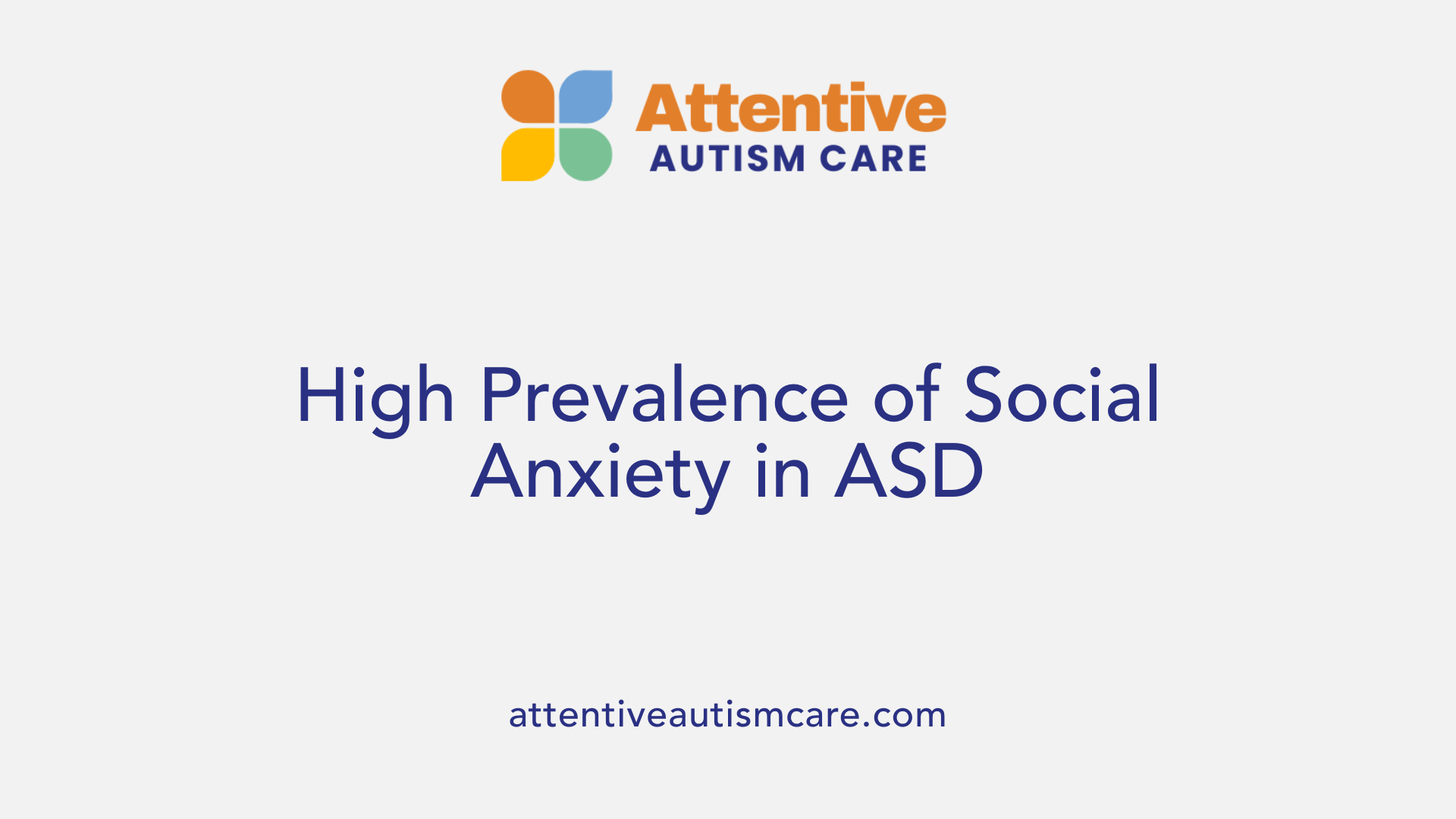
What is the prevalence of social anxiety among individuals with autism?
Social anxiety is notably more common in individuals with autism spectrum disorder (ASD) than in the general population. Research indicates that up to 50% of autistic individuals experience social anxiety, a rate significantly higher than the 7-13% prevalence observed among non-autistic people. This elevated incidence underscores the close relationship between ASD and social anxiety symptoms.
This disparity highlights that social anxiety is a frequent co-occurring condition within autism. These higher rates suggest that autistic people face unique challenges in social settings that contribute to or exacerbate anxiety. Understanding this prevalence helps shape targeted interventions and better support strategies to address social anxiety within the autism community.
Core Social Communication Difficulties Contributing to Social Anxiety in ASD

How do social communication difficulties contribute to social anxiety in autism?
Individuals with autism spectrum disorder (ASD) often face challenges in social communication that are central to the development of social anxiety. One major difficulty lies in interpreting and understanding social cues, which are essential for effective social interaction. Without clear comprehension of these cues, autistic individuals may feel uncertain and anxious in social situations.
Maintaining eye contact is another common challenge. Many autistic people experience reduced fixation on others' eyes, which can hinder their ability to read emotions like fear or sadness. This impairment contributes to misinterpretations and increases discomfort during social exchanges.
Additionally, participating in reciprocal conversations can be particularly difficult. Autistic individuals may struggle with the back-and-forth nature of conversations, which can lead to awkwardness or misunderstandings. These communication barriers often heighten feelings of social incompetence and increase the risk of social anxiety.
Together, these communication difficulties foster a sense of unpredictability and insecurity in social environments, making interactions stressful and sometimes overwhelming. This heightened social uncertainty is a significant factor that underpins the elevated rates of social anxiety observed in individuals with ASD.
Emotional Regulation Impairments as a Risk Factor for Social Anxiety in Autism
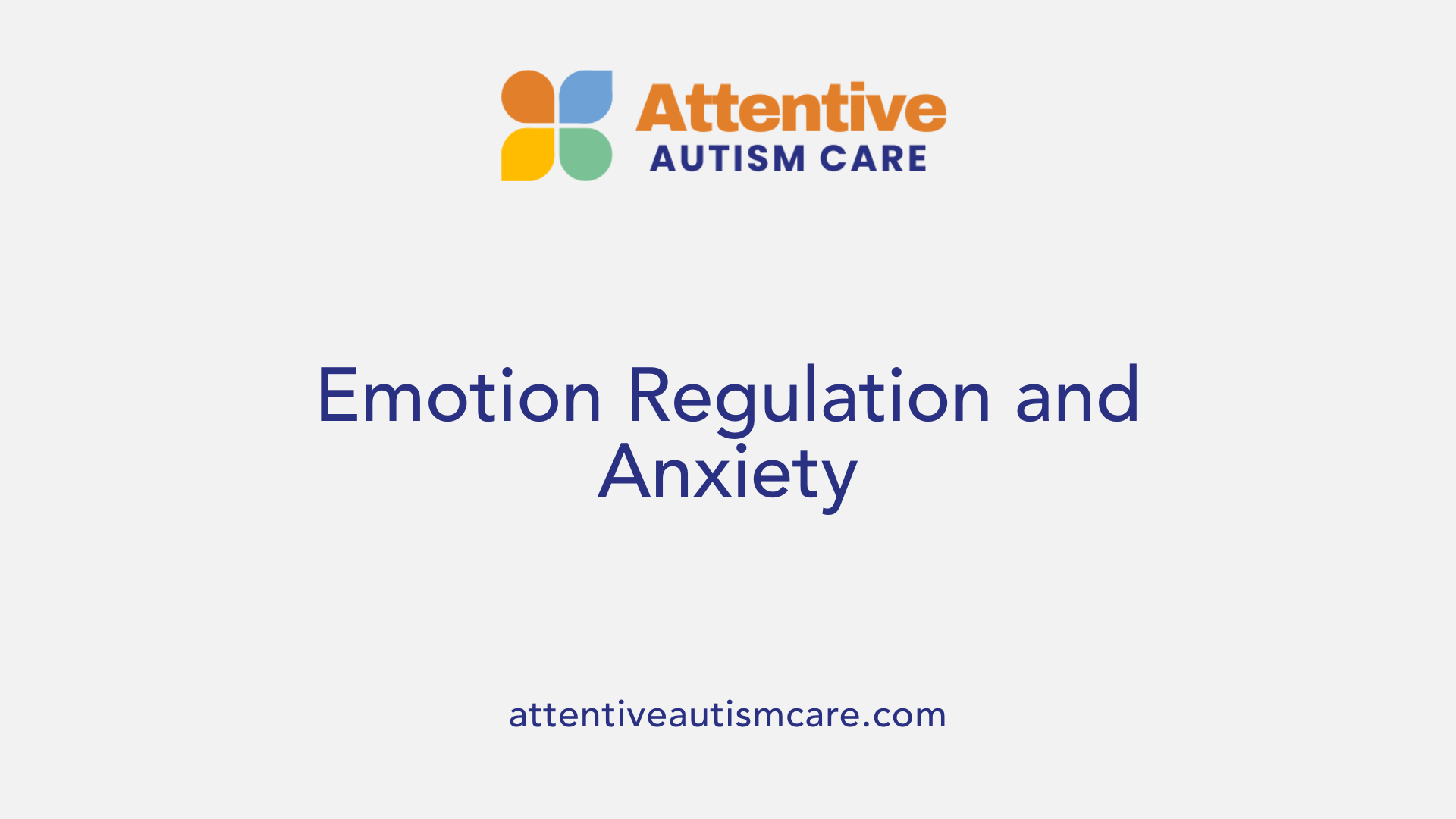
What role do emotional regulation impairments play in social anxiety among autistic individuals?
Emotional regulation deficits are a critical factor contributing to the high rates of social anxiety seen in individuals with autism spectrum disorder (ASD). These impairments affect a person’s ability to manage and respond to emotional experiences effectively, which can heighten feelings of fear, worry, and stress during social interactions.
Impact on the development of anxiety
In autistic individuals, difficulties in controlling emotions often lead to increased vulnerability to social anxiety. For example, when faced with unpredictable or challenging social situations, poor emotional regulation can result in overwhelming distress, making these encounters highly stressful. This heightened emotional response may discourage participation in social activities, reinforcing avoidance behaviors and intensifying anxiety symptoms.
Moreover, emotional regulation problems interplay closely with other ASD-related challenges such as social communication difficulties and rigidity, creating a cycle that maintains and exacerbates social anxiety. Addressing these emotional regulation issues is therefore essential for effective intervention strategies aimed at reducing social anxiety in autistic populations.
By focusing therapy on improving emotional regulation skills alongside social skills and coping mechanisms, individuals with ASD can better manage anxiety-provoking situations, leading to improved social functioning and overall mental health.
Intolerance of Uncertainty and Its Mediation of Anxiety in ASD
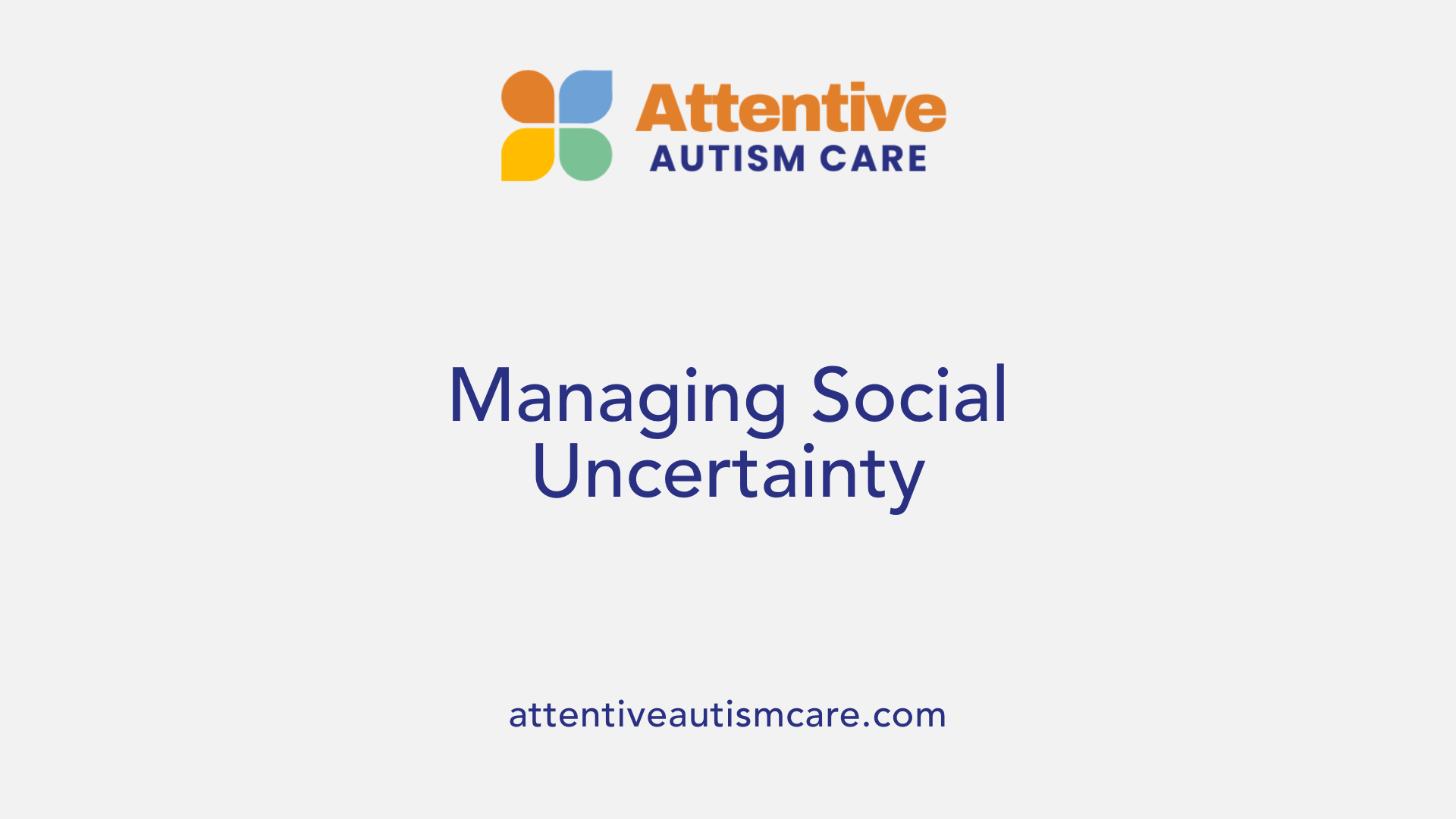
How does intolerance of uncertainty affect social anxiety in autism?
Intolerance of uncertainty (IU) is a significant factor contributing to social anxiety in individuals with autism spectrum disorder (ASD). Many autistic people have a strong preference for routine and predictability. This preference stems from their discomfort with ambiguity and change, especially in social situations that are inherently unpredictable.
When faced with uncertain social environments—such as meeting new people or navigating spontaneous conversations—autistic individuals often experience heightened distress. This distress can manifest as increased social anxiety, as uncertainty triggers feelings of fear and vulnerability.
IU essentially mediates how anxiety develops in ASD by linking the discomfort with unpredictability to emotional responses. It creates a feedback loop where avoidance of uncertain social scenarios reinforces anxiety and reduces opportunities to build social confidence.
Most interventions addressing social anxiety in autism recognize the importance of helping individuals manage IU. Teaching coping strategies for uncertainty and gradually exposing individuals to unpredictable situations can reduce the intensity of social anxiety over time.
Supporting autistic individuals in understanding and adapting to uncertainty improves their emotional regulation, social competence, and overall mental health, thus lessening the social anxiety burden.
Reduced Social Competence and Its Impact on Social Anxiety
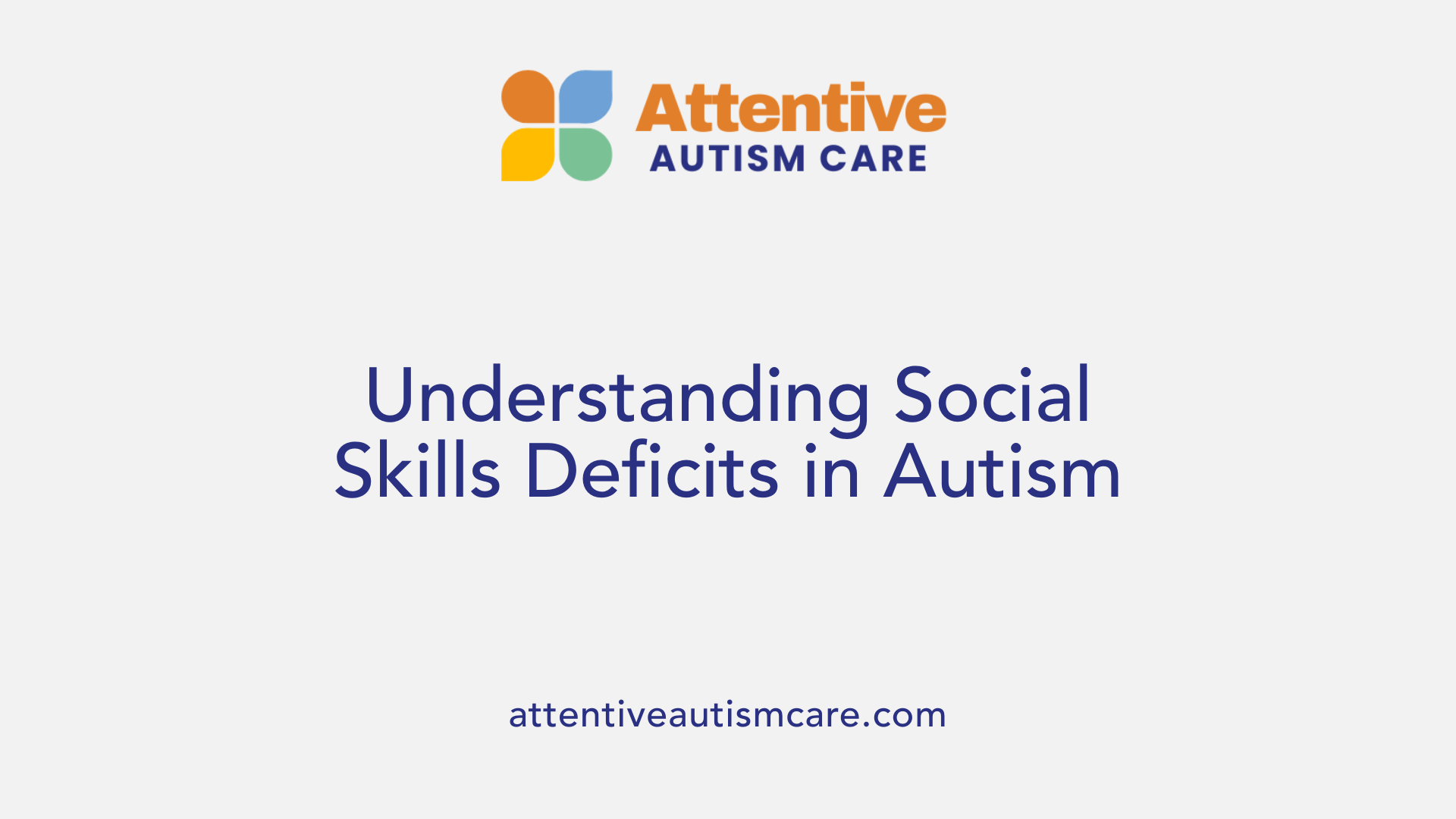
How does reduced social competence contribute to social anxiety in ASD?
Reduced social competence is a critical factor in the elevated social anxiety observed among individuals with autism spectrum disorder (ASD). This reduction primarily stems from deficits in social information processing — the ability to accurately perceive and interpret social cues such as facial expressions, body language, and conversational nuances. When these cues are misunderstood or missed, social interactions become challenging and unpredictable.
These processing difficulties often lead to impairments in reciprocal interactions, such as maintaining eye contact and responding appropriately during conversations. The resulting awkwardness or social missteps can heighten fears of negative evaluation by others. Consequently, individuals with ASD may experience increased anxiety around social situations due to concerns about rejection, embarrassment, or misunderstanding.
In addition, diminished social motivation and reduced social skills further compound these challenges. Individuals may feel less confident or compelled to engage socially, reinforcing isolation and avoidance. This cycle solidifies social anxiety by limiting opportunities to develop and practice social competence, thus perpetuating fears of social judgment.
Overall, deficits in social information processing and interaction capacity directly undermine successful social engagement. This undermining generates a sense of vulnerability in social contexts, which fosters heightened social anxiety in ASD populations.
Cognitive Awareness and Social Anxiety in Adolescents with Autism
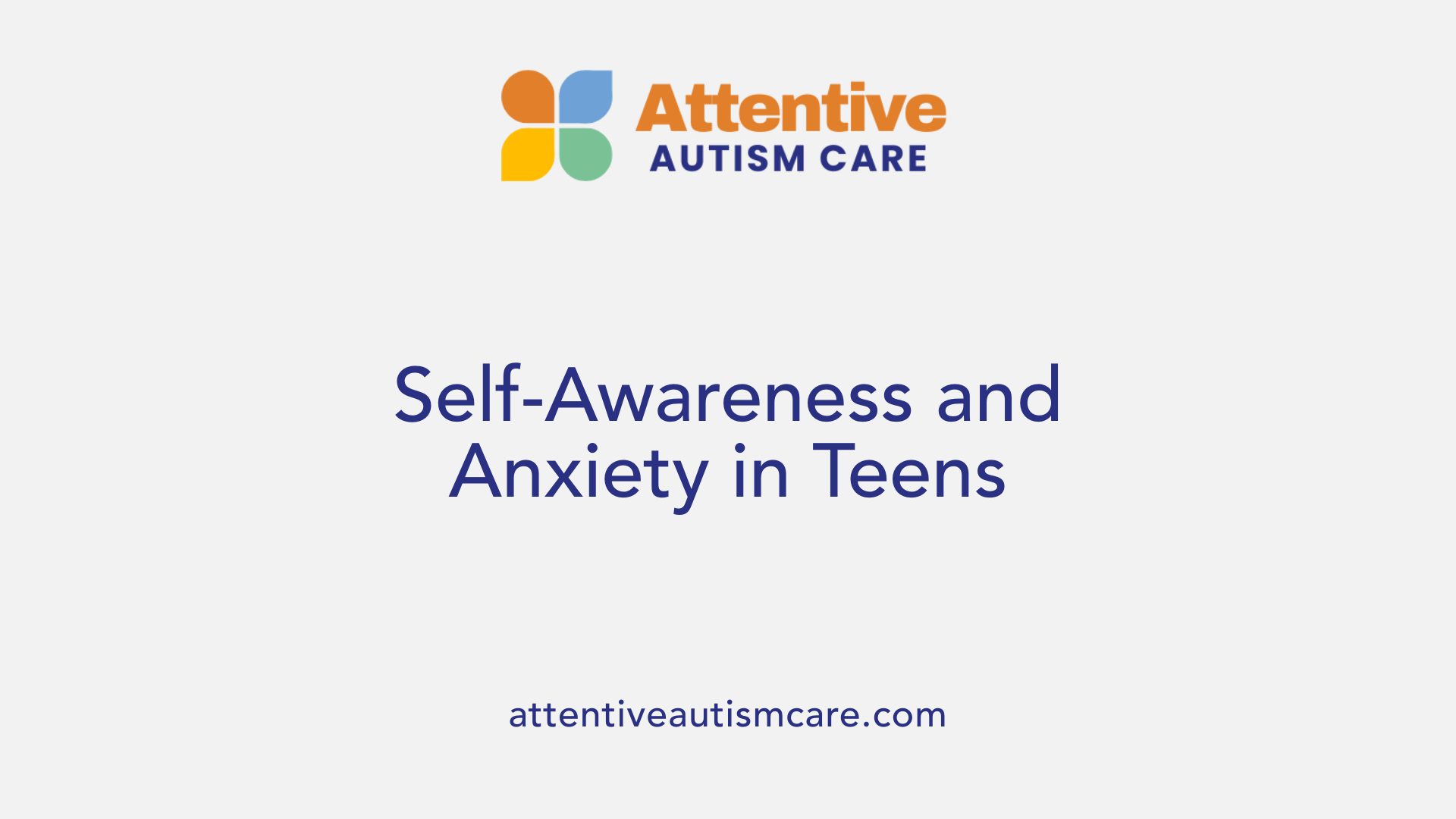
How does high cognitive ability relate to social anxiety in autistic adolescents?
In adolescents with autism spectrum disorder (ASD), high cognitive ability is linked to a greater awareness of social difficulties they face. This increased insight into their social challenges often means these individuals become more self-conscious in social contexts.
This heightened self-awareness can contribute to elevated levels of social anxiety as they recognize discrepancies between their social skills and those of peers. Being more sensitive to social failures or awkwardness intensifies worry about social evaluation.
In contrast, some individuals with less insight may experience less social anxiety since they are less aware of how their social behaviors differ. Therefore, the relationship between cognitive ability and social anxiety reflects how awareness shapes emotional responses.
Overall, adolescents with ASD and higher cognitive functioning tend to be more vulnerable to social anxiety due to this deeper recognition of social challenges, which can impact their social confidence and willingness to engage in social interactions.
Protective Factors: Poor Insight and Reduced Social Anxiety in ASD
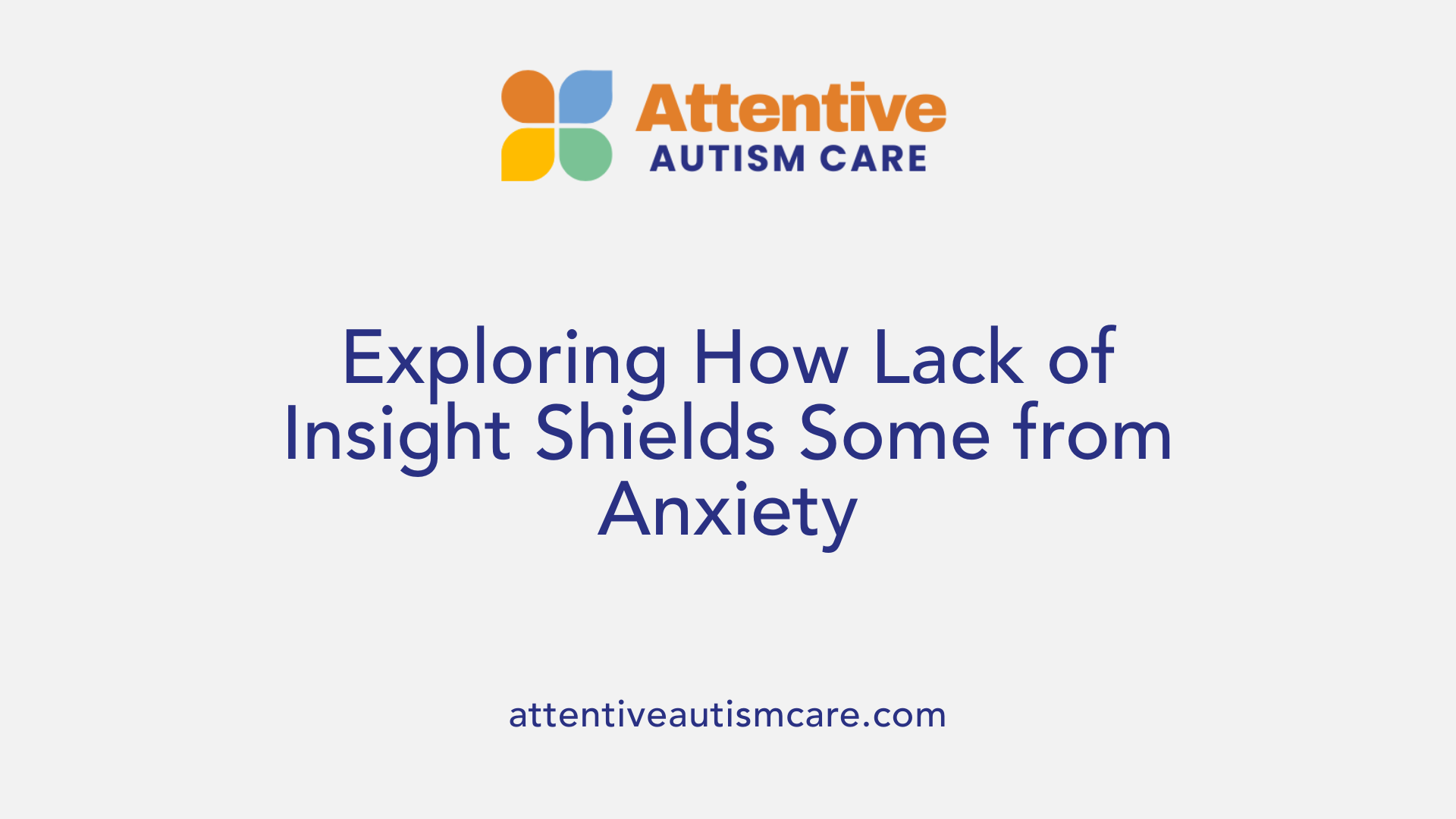
Can poor insight into social deficits protect autistic individuals from social anxiety?
Poor insight into social awkwardness and social skills deficits may serve as a protective factor for some individuals with autism spectrum disorder (ASD) against developing social anxiety. This lack of self-awareness reduces the degree of negative self-evaluation during social interactions, which is a key contributor to social anxiety in the general population.
Role of poor insight into social awkwardness
Many autistic individuals experience difficulties in understanding and interpreting social cues, which can contribute to social communication challenges. However, when there is limited awareness of these social difficulties, it can mitigate the anxiety that arises from anticipating negative judgments or rejection. In other words, not fully recognizing social shortcomings may prevent the buildup of apprehension or fear regarding social performance.
Potential buffering effect
This buffering effect suggests that some autistic individuals might avoid the typical spiral into social anxiety by not engaging in intense self-focused scrutiny during social encounters. Consequently, they may experience less distress and fewer avoidance behaviors related to social situations. Although this poor insight could limit opportunities for social learning and growth, it may simultaneously reduce the emotional burden associated with social fears.
Understanding this protective role invites therapists and clinicians to consider individual differences in self-awareness when designing interventions. Tailored approaches that balance improving social insight without exacerbating anxiety are crucial for better therapeutic outcomes in autistic populations.
Eye Fixation and Fear Recognition Deficits Linked to Social Anxiety
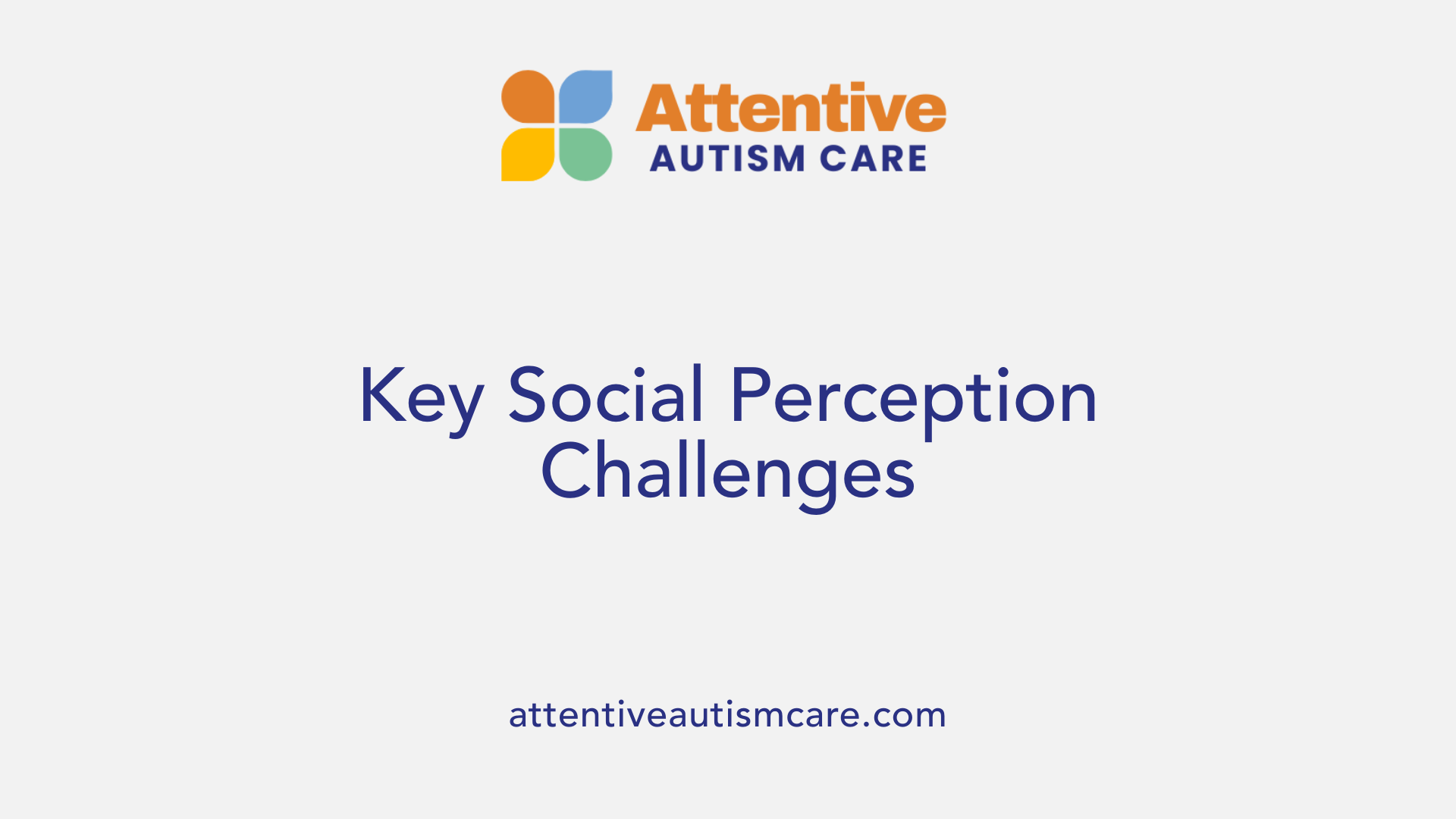
What is the association between eye fixation and social anxiety in autism?
Individuals with autism spectrum disorder (ASD) often show reduced fixation on others' eyes during social interactions. This reduced eye contact is significant because the eyes convey crucial emotional information. When autistic individuals fixate less on the eyes, they miss important social cues that help interpret others' feelings.
How does impaired emotion recognition relate to social anxiety?
In addition to reduced eye contact, autistic individuals frequently experience difficulty recognizing fearful and sad facial expressions. These impairments limit their ability to understand social signals that might warn of social threats or guide emotional empathy.
Why do these factors contribute to social anxiety?
The combination of avoiding eye contact and struggling to read fearful or sad expressions increases uncertainty and misunderstanding in social situations. This heightened difficulty makes social engagement more stressful and unpredictable, thus intensifying social anxiety. When emotional cues go unrecognized, autistic individuals may feel less confident and more anxious during interactions.
Reduced eye fixation and impaired fear recognition form a cycle where less accurate social perception feeds into anxiety, which can further reduce engagement and perpetuate social difficulties. Addressing these deficits in therapeutic settings may help improve social understanding and reduce social anxiety in ASD.
| Factor | Description | Impact on Social Anxiety in ASD |
|---|---|---|
| Reduced eye fixation | Less looking at eyes during interaction | Limits detection of emotional cues, increases social uncertainty |
| Impaired fear/sad recognition | Difficulty identifying fearful and sad expressions | Leads to misunderstanding social signals, raising anxiety levels |
Understanding these elements is crucial for designing interventions that enhance emotion recognition and eye contact to alleviate social anxiety in autistic individuals.
Interplay of Social Cognition, Emotional Regulation, and Behavioral Rigidity in Social Anxiety Development
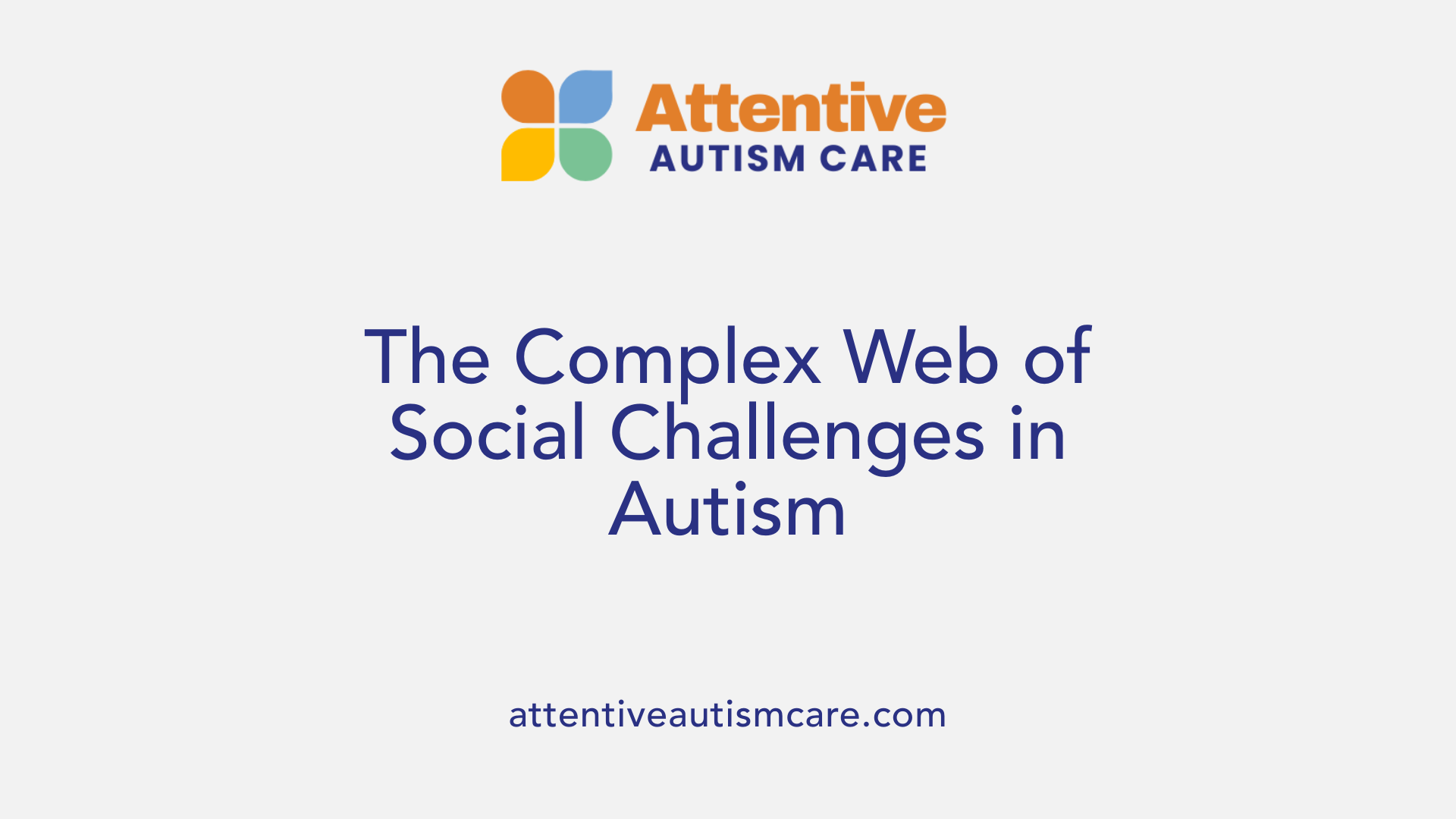
How do social cognition deficits, emotional regulation impairments, and behavioral rigidity contribute to social anxiety in autism?
Social anxiety in autism spectrum disorder (ASD) is shaped by the combined influence of several interrelated factors. Individuals with ASD often face social cognition deficits, which include difficulties interpreting social cues, maintaining eye contact, and engaging in reciprocal conversations. These challenges reduce social competence and produce feelings of uncertainty in social interactions.
Emotional regulation impairments further exacerbate social anxiety. Difficulties managing emotional responses mean that stressful social situations can feel overwhelming, increasing anxiety and fear. Additionally, intolerance of uncertainty—a preference for predictable routines and discomfort with unexpected changes—intensifies distress in social settings, known to be variable and unpredictable.
Behavioral rigidity, manifested as repetitive behaviors and resistance to change, compounds these challenges. This rigidity limits adaptive coping strategies in social contexts, making it harder for autistic individuals to respond flexibly to social demands. When combined with social cognition difficulties and emotional regulation issues, behavioral rigidity creates a heightened vulnerability to social anxiety.
Overall, the interplay of these ASD traits contributes to the development and maintenance of social anxiety by fostering a cycle of social fears, avoidance, and decreased social motivation. Understanding this multifactorial process is essential for designing tailored interventions that address social cognition, emotion regulation, and behavioral flexibility together to effectively reduce social anxiety in autism.
Significance of Understanding Autism-Related Social Anxiety for Therapeutic Strategies
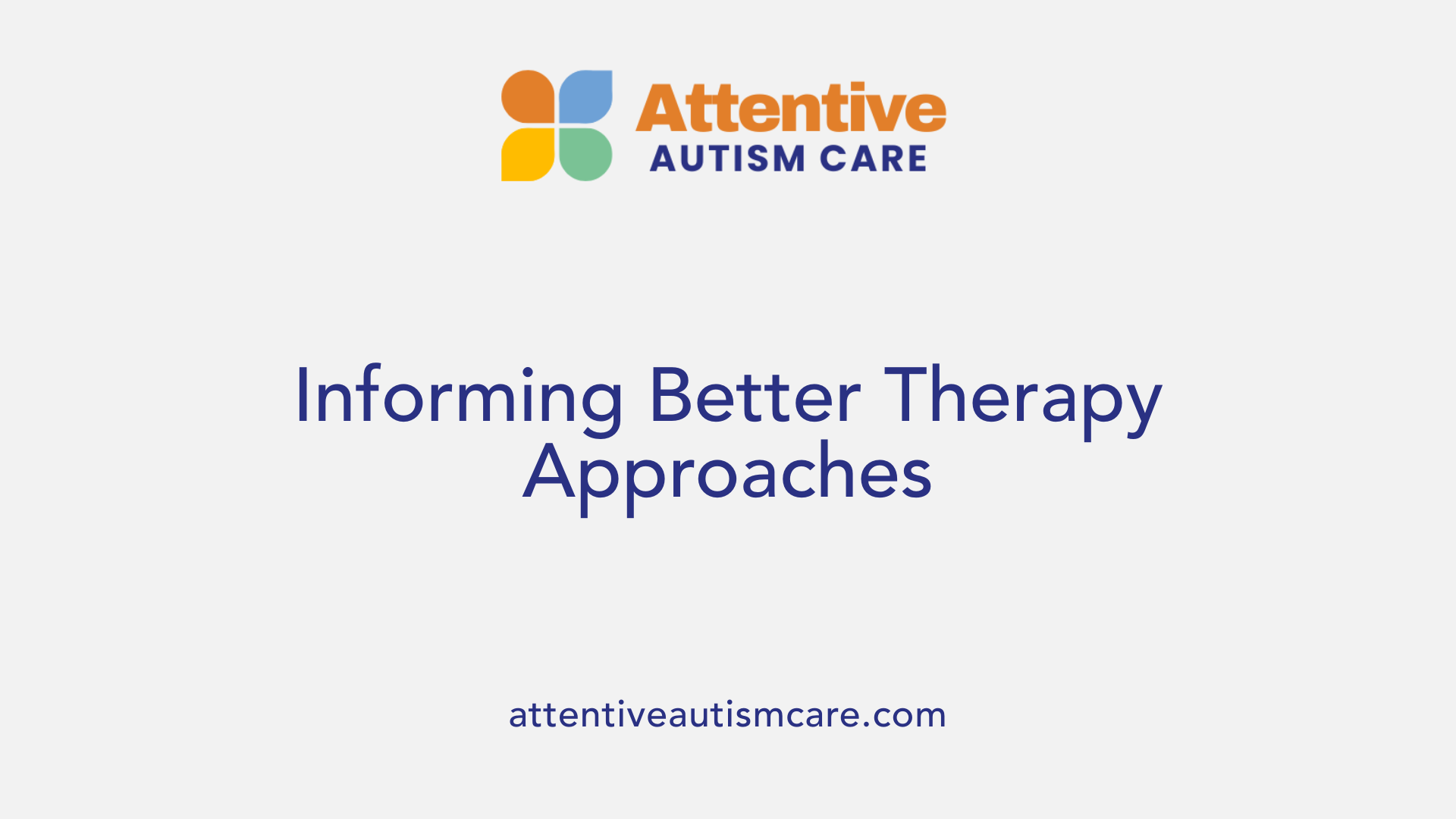
Why is understanding social anxiety in autism important for therapy?
A clear understanding of factors contributing to social anxiety in autism informs the development of targeted interventions aimed at reducing social anxiety symptoms and improving social functioning among autistic individuals.
Informing targeted interventions
Individuals with autism spectrum disorder (ASD) often experience social anxiety at rates much higher than the general population—up to 50% compared to 7-13% typically. This anxiety stems from multiple overlapping challenges such as difficulties interpreting social cues, impaired emotional regulation, intolerance of uncertainty, and reduced social competence. Recognizing these unique contributors enables clinicians to tailor therapeutic approaches effectively.
Cognitive-behavioral therapy (CBT), especially when modified for autism, has shown promise in alleviating social anxiety symptoms. Programs incorporating social skills training, exposure tasks, and behavioral experiments address core deficits and improve social motivation. Additionally, group CBT fosters peer connection, reduces feelings of isolation, and promotes authentic interactions without pressure to camouflage autistic traits.
Reducing social anxiety outcomes
Clinical studies demonstrate moderate to significant reductions in social anxiety following tailored CBT interventions for autistic individuals. These improvements extend beyond anxiety symptoms to secondary outcomes including mood, depression, and stress levels. Importantly, reductions in social anxiety are sometimes linked to decreases in camouflaging behaviors, which while initially protective, often contribute to mental health burdens.
Despite positive outcomes, therapy must also address sensory sensitivities, fatigue, and ingrained coping strategies unique to autism. Holistic, neurodivergent-centered programs that incorporate structured goal setting and sensory adjustments increase engagement and efficacy. Ongoing research emphasizes the need to refine existing models of social anxiety to encompass autism-specific factors, ultimately enhancing therapeutic precision and outcomes.
Co-occurrence of Autism and Social Anxiety: Clinical Implications
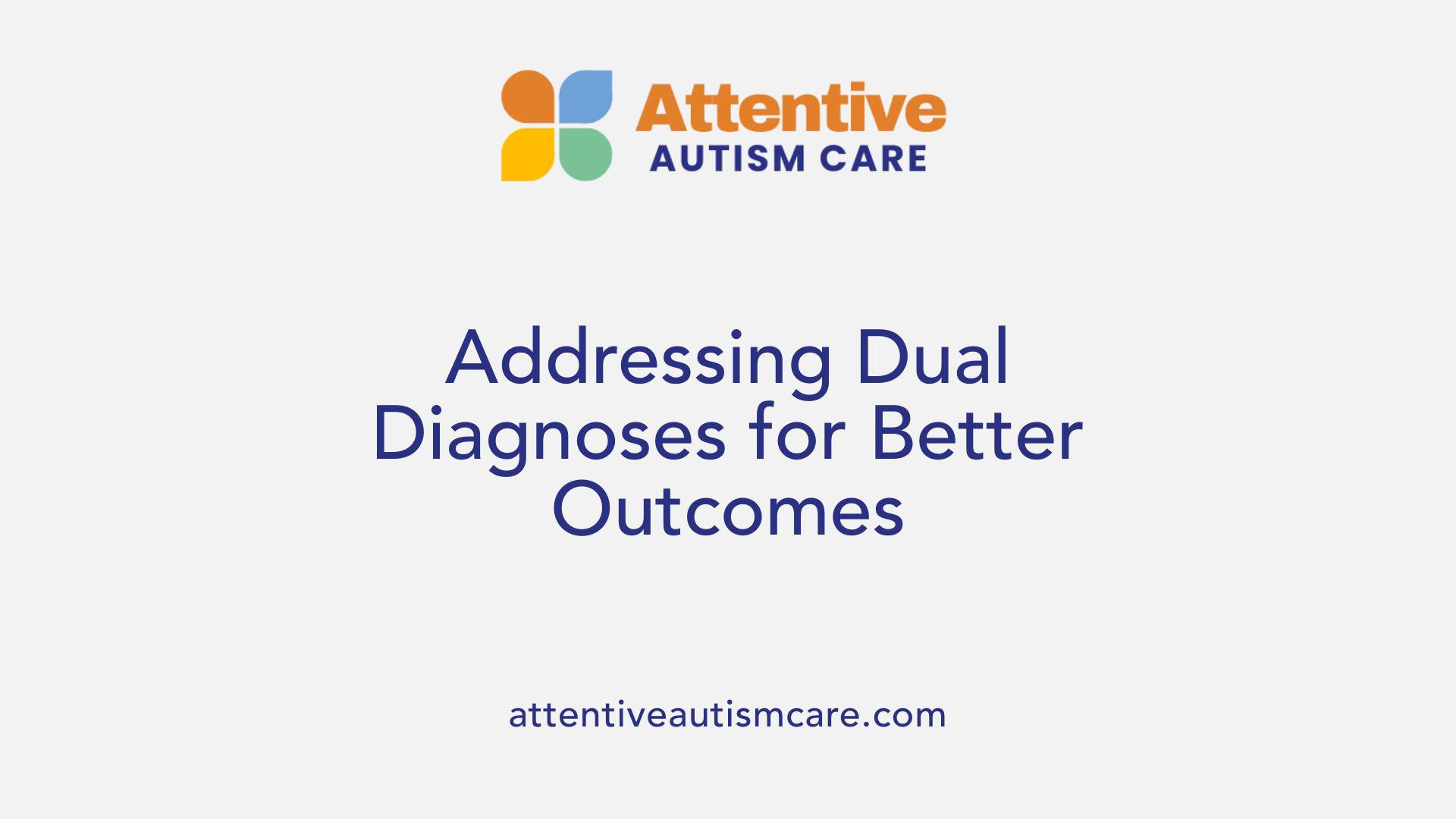
How common is co-occurring social anxiety in autism and what are the clinical implications?
Social anxiety (SA) frequently co-occurs with autism spectrum disorder (ASD), with rates of social anxiety in ASD individuals reaching as high as 50%, compared to 7–13% in the general population. This high prevalence highlights the significant interplay between symptoms of social anxiety and the core characteristics of autism.
Individuals with ASD often struggle with social communication, emotional regulation, and social competence, all of which contribute to heightened social anxiety. Additionally, intolerance of uncertainty and cognitive awareness of social difficulties can exacerbate social fears. These overlapping factors underscore the complexity of social anxiety within the autistic population and its impact on well-being and daily functioning.
Therapy considerations for co-occurring ASD and social anxiety
Effective therapy for social anxiety in individuals with ASD must address their unique challenges. Modified cognitive-behavioral therapy (CBT) programs tailored for autistic adults and youth have demonstrated promise in reducing social anxiety symptoms. Interventions that combine social skills training, exposure tasks, and behavioral experiments can improve social motivation and decrease anxiety.
CBT's effectiveness is enhanced by adapting content to accommodate sensory sensitivities, incorporating structured goal-setting, and providing visual supports. Importantly, group therapy formats offer peer connection, fostering engagement and reducing feelings of isolation and stigma.
However, camouflaging behaviors—strategies used by autistic individuals to mask autistic traits—may persist independently of social anxiety reduction and require targeted therapeutic focus. Also, aspects such as physical symptoms of anxiety and family interference may need additional modification for optimum outcomes.
In summary, clinical interventions must be multifaceted, addressing both social anxiety and autism-related social challenges, while considering the mental health impacts of camouflaging and the need for neurodivergent-affirming environments.
Research Focus on Associations Between ASD and Social Anxiety Symptoms
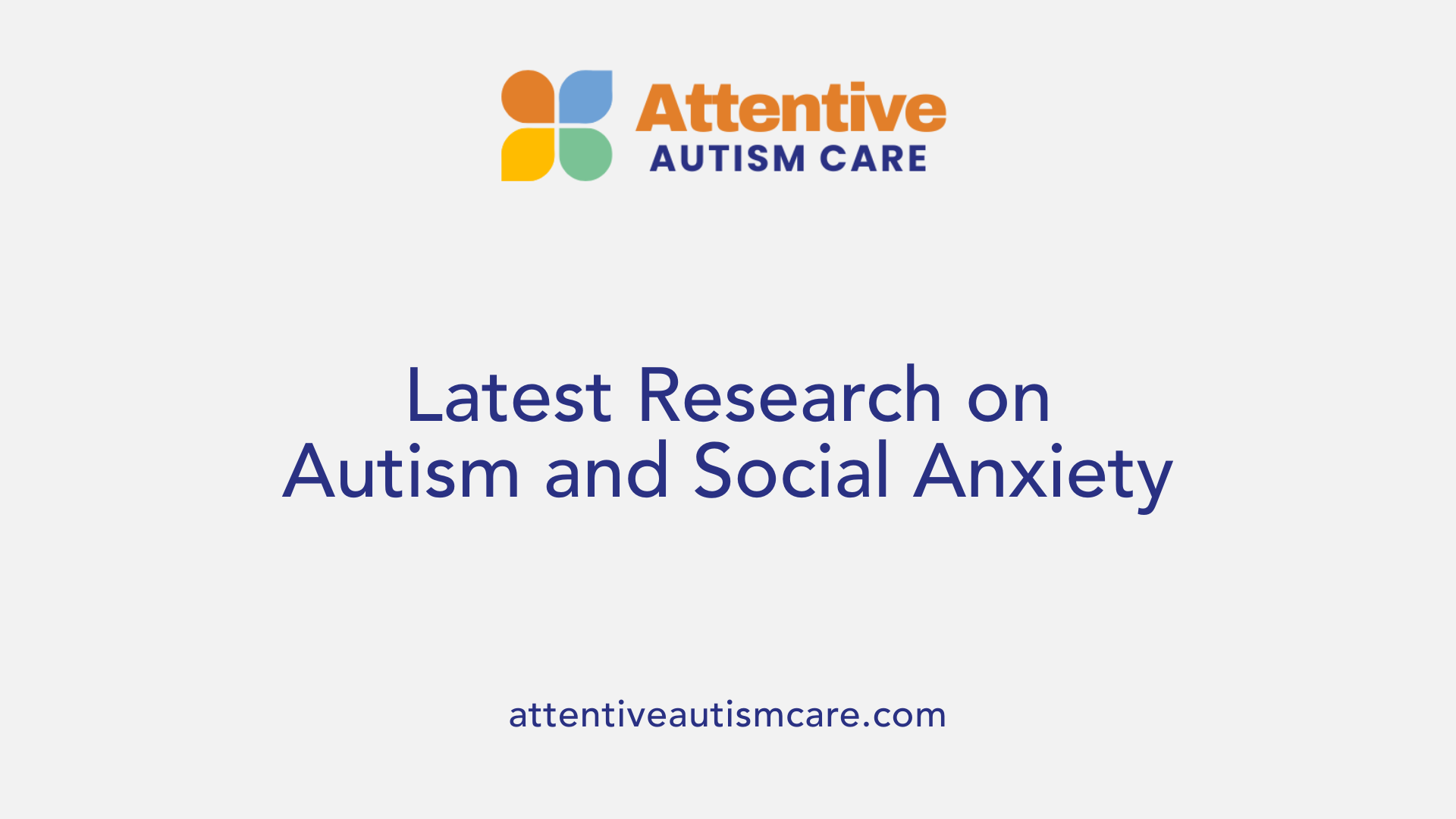
What has research revealed about the relationship between ASD and social anxiety?
Extensive research has explored the relationship between autism spectrum disorder (ASD) and social anxiety (SA), revealing important associations that affect both diagnosis and treatment approaches. A review of 24 studies focusing on this connection highlights the considerable overlap and interplay between ASD symptoms and social anxiety features.
These studies consistently demonstrate that individuals with ASD experience high rates of social anxiety, often linked to difficulties in social communication, emotional regulation, and social competence. Research also shows that social anxiety in ASD is associated with poorer social skills, decreased social motivation, and overall reduced social functioning, which further complicates therapeutic interventions.
Moreover, the research emphasizes that self-rated social anxiety symptoms positively correlate with ASD symptom severity. This suggests that individuals' subjective experiences of anxiety align closely with their autism traits, even when parent reports do not reflect this pattern. Understanding these nuances is crucial for clinicians aiming to develop effective, person-centered therapies.
Importance of research on ASD and social anxiety
The focused examination of ASD and social anxiety symptoms has significant clinical implications. It informs the adaptation of interventions, such as cognitive-behavioral therapy (CBT), to better address the unique challenges faced by autistic individuals. This area of study also identifies protective factors—such as poor insight into social difficulties, which might buffer against anxiety—and points to the need to explore causal and maintaining mechanisms behind social anxiety in ASD.
By deepening the understanding of these intertwined conditions, ongoing research supports the design of more effective, tailored treatments that can improve the quality of life for people with ASD. It also helps clarify which symptoms and behaviors are most impactful, guiding clinical focus toward those areas that can most benefit from intervention.
Social Anxiety's Impact on Behavioral Aspects Relevant to Therapy
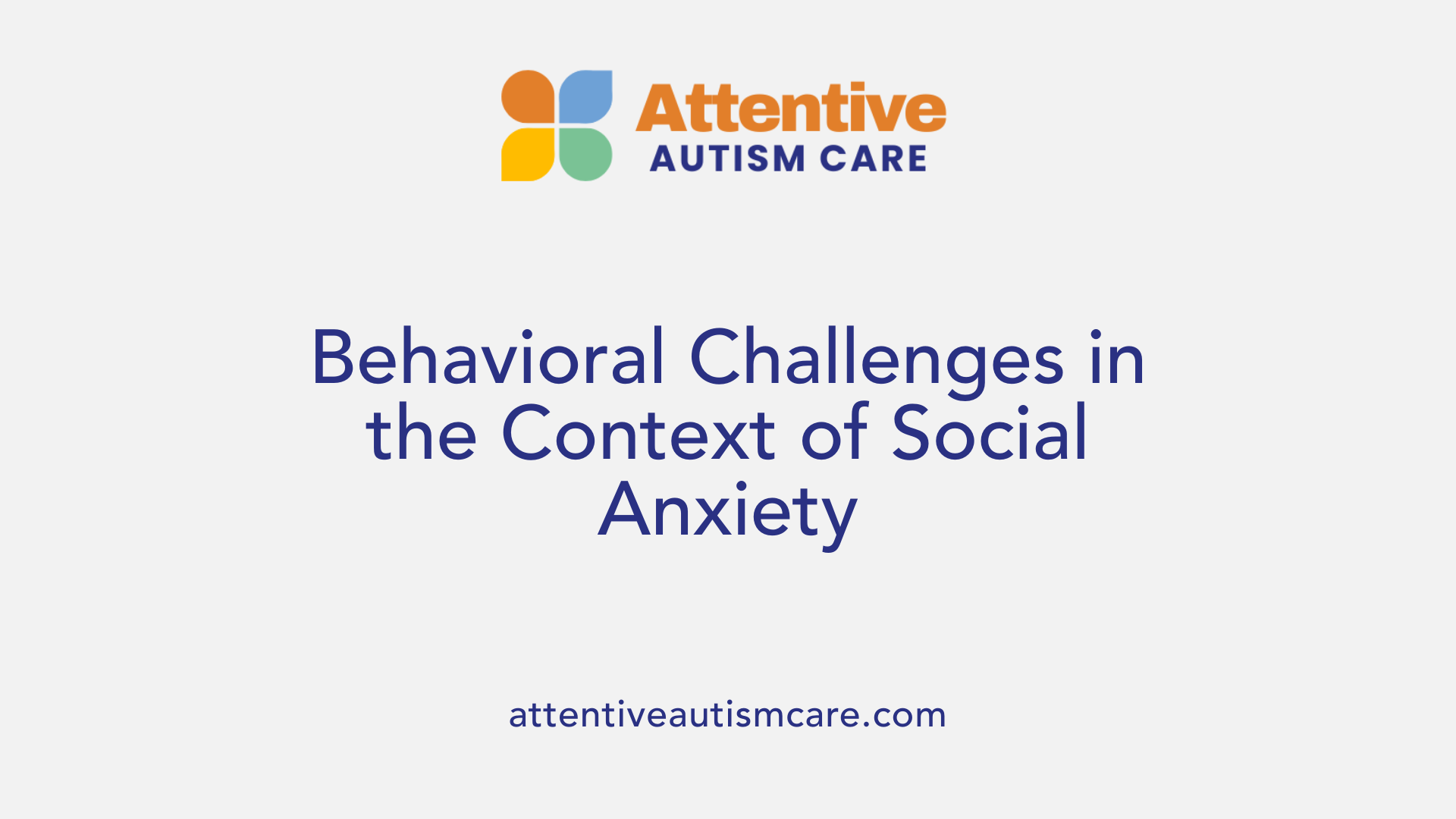
How does social anxiety affect social skills and motivation in autistic individuals?
Social anxiety (SA) has a profound effect on several behavioral domains in individuals with autism spectrum disorder (ASD). Research has shown that autistic individuals experiencing higher levels of social anxiety often demonstrate poorer social skills. This includes difficulties in processing social information, initiating and maintaining social interactions, and navigating complex social environments.
One notable impact of social anxiety is a reduction in social motivation. Autistic individuals with elevated SA symptoms tend to exhibit less intrinsic drive to engage socially. This decrease in social motivation may stem from fears of negative evaluation or repeated social setbacks, creating a cycle that reinforces social withdrawal.
Additionally, social anxiety contributes to diminished social competence, making it challenging for individuals to perform appropriately in social situations even when motivated. Compounding this, emotional regulation impairments common in ASD further intensify the difficulty in managing social stress, which can interfere with therapy focused on social skills enhancement.
Implications for behavioral therapy
Given these effects, social anxiety can complicate behavioral interventions aiming to improve social functioning in autistic individuals. Therapy programs must account for the reduced social motivation and competence linked to SA to maximize engagement and skill acquisition. For example, interventions like cognitive-behavioral therapy (CBT) often incorporate social skills training alongside anxiety management techniques to address this interplay.
Moreover, recognizing that social anxiety may diminish the effectiveness of therapy by lowering participation levels is crucial. Tailoring therapy to include anxiety reduction strategies may help autistic individuals become more receptive to social skills development.
In summary, social anxiety in autism is closely intertwined with behavioral components critical to therapy success. Addressing both social anxiety and social skill deficits simultaneously is essential for effective treatment planning and improved social outcomes.
| Aspect | Impact in ASD with Social Anxiety | Therapeutic Considerations |
|---|---|---|
| Social Skills | Poorer skills in social information processing and interaction | Incorporate direct social skills training |
| Social Motivation | Reduced drive to engage in social interactions | Use anxiety management to boost motivation |
| Social Competence | Difficulty performing appropriately in social contexts | Blend anxiety and social competence interventions |
| Emotional Regulation | Impaired regulation worsens social anxiety and stress handling | Include emotional regulation strategies |
Subjective Experience and Assessment of Social Anxiety in Autism
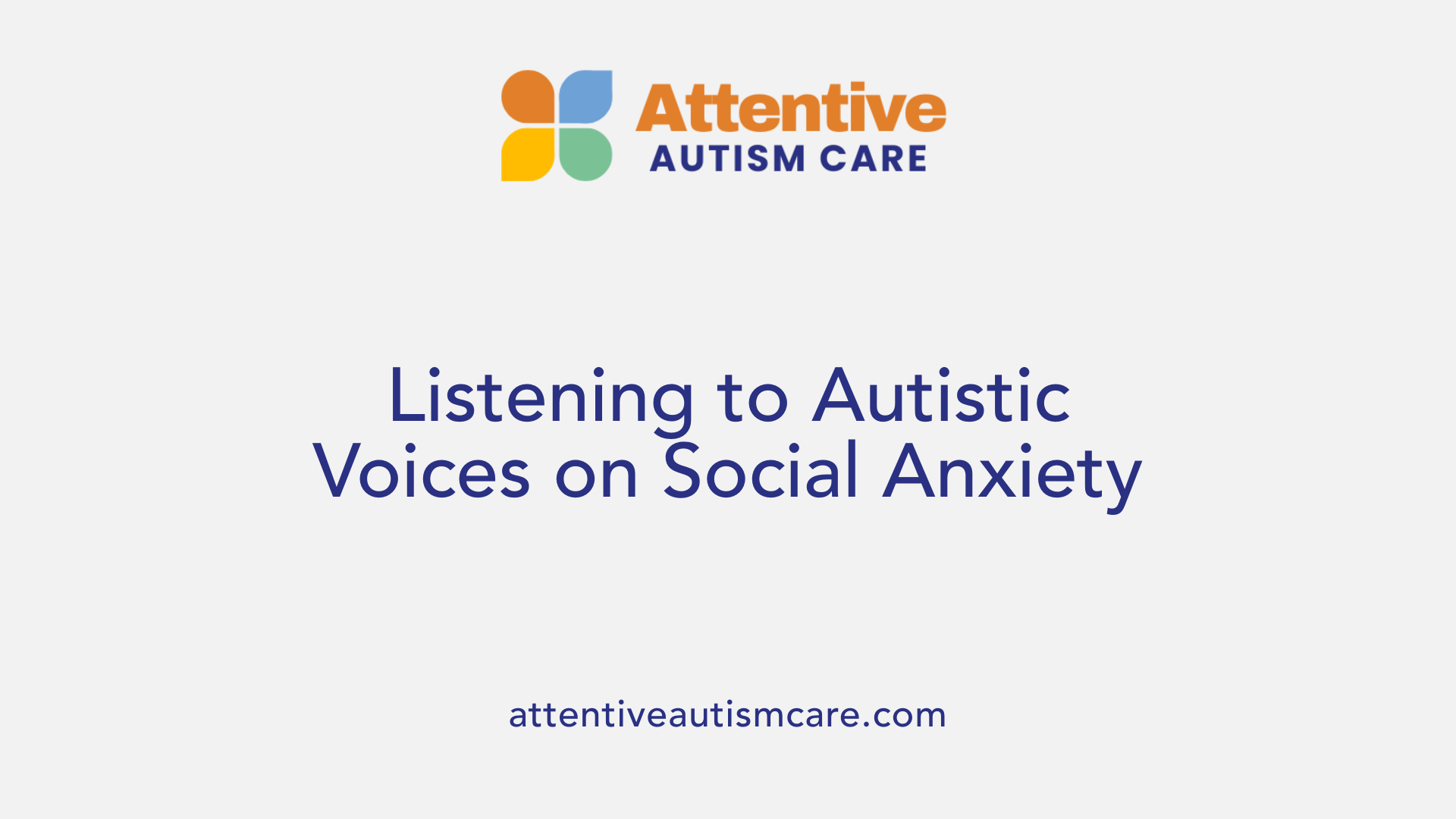
How do self-rated and parent-rated social anxiety symptoms differ in autistic individuals?
Research indicates a clear divergence between self-rated and parent-rated assessments of social anxiety (SA) in individuals with autism spectrum disorder (ASD). Autistic individuals' self-reports of their social anxiety symptoms show a positive correlation with the severity of ASD symptoms. This alignment underscores how the subjective experience of social anxiety closely reflects the individual's own perception of their social challenges.
In contrast, parent ratings of their autistic children's social anxiety symptoms often do not correlate significantly with ASD symptom severity. This disparity suggests that parents may not fully capture the internal experience of social anxiety their children face or may perceive anxiety differently from their child's actual feelings.
Therapy planning considerations
Given these differences, therapy planning for social anxiety in ASD should prioritize self-reports to better understand the nuances of the individual's experiences. Relying solely on parent or external observations risks underestimating or misrepresenting social anxiety symptoms, which could lead to less effective intervention strategies.
In clinical practice, incorporating both perspectives can provide a more comprehensive assessment but with an emphasis on the autistic individual's subjective account. This approach allows for tailored interventions that address the inner social fears and anxieties that might not be visible to others, thereby enhancing therapy effectiveness.
Relationship Between Social Anxiety and Autism-Specific Behaviors
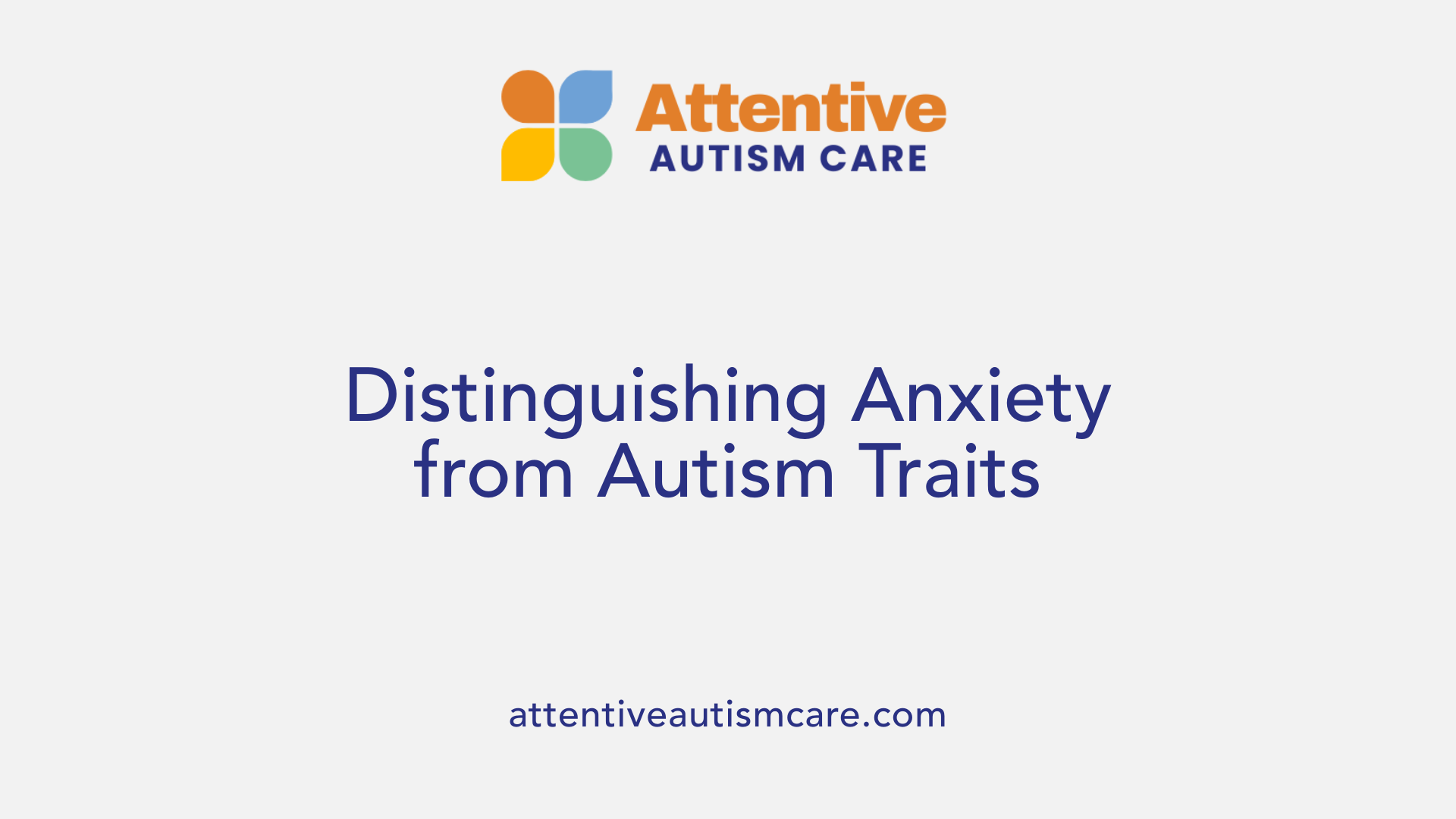
Are social anxiety symptoms related to restricted, repetitive behaviors or sensory sensitivities in autism?
Social anxiety (SA) frequently occurs alongside autism spectrum disorder (ASD), but research indicates that SA symptoms are not strongly linked to core autism traits like restricted, repetitive behaviors (RRBs) or sensory sensitivities. Current tentative evidence suggests these autism-specific behaviors do not significantly contribute to the development or severity of social anxiety symptoms.
This distinction is important for clinical practice. Since social anxiety in ASD does not strongly associate with RRBs or sensory sensitivities, therapeutic approaches targeting anxiety often focus more on social communication difficulties, emotional regulation, and cognitive factors. Consequently, behavioral interventions such as cognitive-behavioral therapy (CBT) are shaped to address social fears, avoidance, and social skills deficits without necessarily emphasizing repetitive or sensory-related behaviors.
Given that RRBs and sensory issues are characteristic but independent aspects of autism, anxiety treatments tailored for autistic individuals prioritize social motivation, confidence-building, and emotional coping strategies rather than directly modifying sensory sensitivities or repetitive behaviors.
This nuanced understanding guides effective intervention planning, ensuring that anxiety management in autism addresses the symptoms most relevant to social anxiety itself rather than broader autistic traits less connected to anxiety.
| Aspect Evaluated | Relationship with Social Anxiety | Implication for Therapy |
|---|---|---|
| Restricted and repetitive behaviors (RRBs) | Weak or no strong association | Anxiety therapy need not focus specifically on RRBs |
| Sensory sensitivities | Weak or no strong association | Sensory issues may require separate support, not core to social anxiety treatment |
Focusing interventions on social communication, emotional regulation, and intolerance of uncertainty appears more beneficial in reducing social anxiety among autistic individuals than addressing sensory or repetitive behavior concerns directly.
Need for Further Investigation of Social Anxiety Mechanisms in Autism
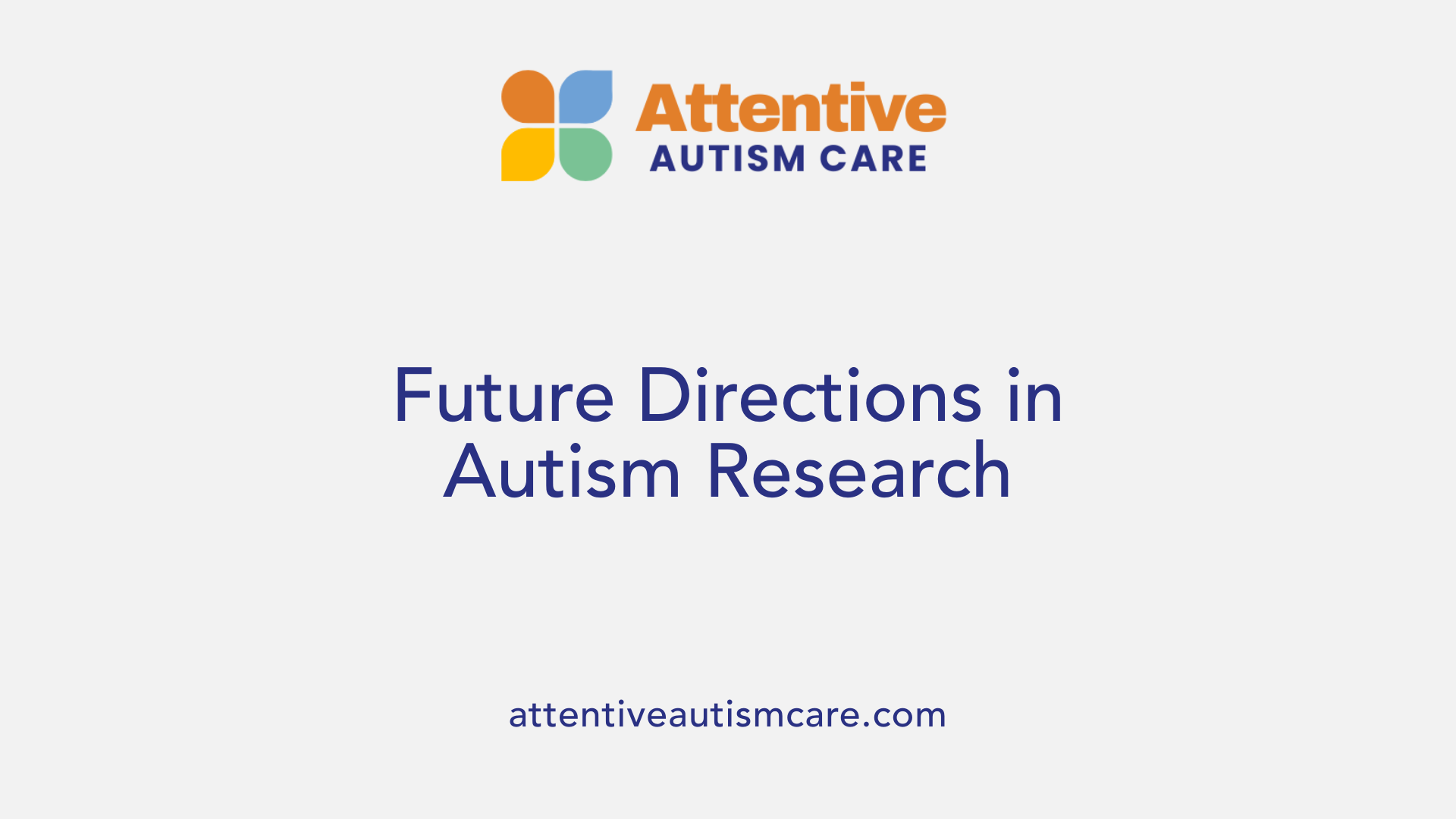
Why is further research needed on social anxiety in autism?
Social anxiety (SA) frequently co-occurs with autism spectrum disorder (ASD), highlighting a complex interplay between autistic traits and anxiety symptoms. Despite the growing understanding that social cognitive deficits, emotional regulation challenges, and behavioral rigidity contribute to social anxiety in ASD, several aspects remain unclear. Existing models, such as Clark and Wells', capture some cognitive features like negative social beliefs but do not fully explain the social fears experienced by autistic individuals.
What are the causal and maintaining factors?
Research indicates that factors including intolerance of uncertainty, diminished social competence, impairments in emotion regulation, and heightened self-awareness of social difficulties can causally influence or maintain social anxiety in those with ASD. Additionally, camouflaging—strategies autistic individuals use to mask social differences—may both arise from and sustain social anxiety but also result from broader social pressures. The layered complexity of these influences suggests that a single model is insufficient to fully describe social anxiety's development and persistence in autism.
Which protective mechanisms require exploration?
Interestingly, some individuals with ASD demonstrate poor insight into their social awkwardness and deficits, which may ironically shield them from intense social anxiety. Understanding these protective mechanisms could inform interventions aimed at balancing social self-awareness with psychological well-being. Further studies are needed to clarify how such protective factors operate and interact with anxiety symptoms.
By deepening insights into these causal, maintaining, and protective mechanisms, research can better inform the design of tailored therapies. This will improve the efficacy of treatments like cognitive-behavioral therapy (CBT), which currently show promise but may not address all underlying contributors to social anxiety in autistic populations.
Camouflaging in Autism: Definition and Components
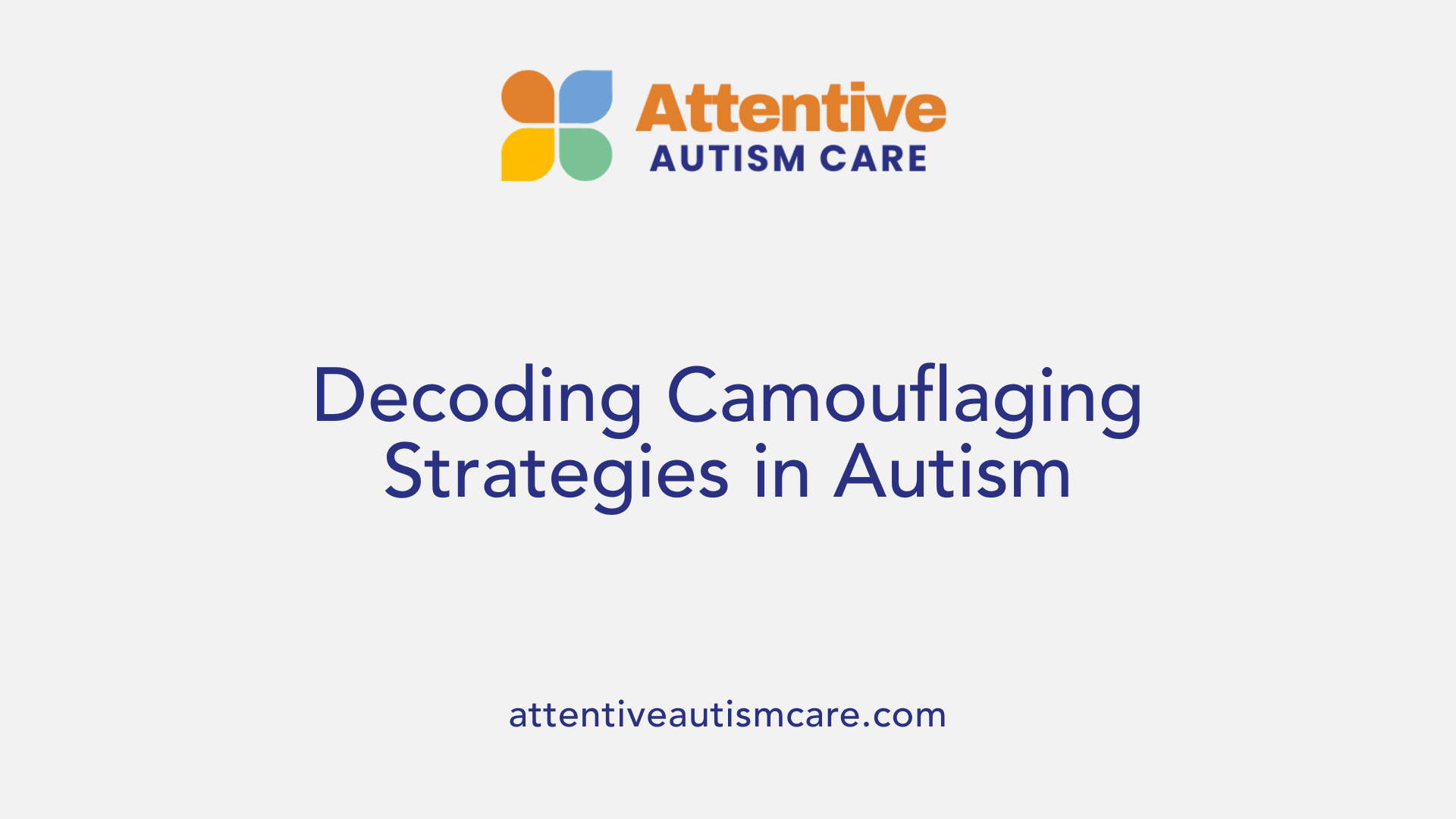
What is camouflaging in autism and what does it involve?
Camouflaging in autism refers to the strategies that autistic individuals use to hide or compensate for their autistic traits during social interactions. This behavior is often motivated by social pressure and the stigma associated with autism, leading individuals to mask their natural expressions and behaviors to fit in with neurotypical social norms.
Camouflaging involves three main components:
Compensation: This strategy involves actively imitating social cues and behaviors. For example, an autistic person might consciously mimic facial expressions or conversational rhythms to appear more socially fluent.
Masking: Masking refers to concealing autistic characteristics that might be perceived as socially unusual or awkward. This could include suppressing stimming behaviors (repetitive movements or sounds) or avoiding topics of intense interest that might not align with typical social conversations.
Assimilation: Assimilation is about blending in by adjusting general behavior to better match the social environment. Individuals might change their body language, voice tone, or eye contact habits to appear more typical and reduce social attention.
These camouflaging behaviors help autistic people navigate social situations but often come at the cost of increased stress, mental fatigue, and diminished feelings of authenticity. Understanding these components is essential for developing supportive interventions that recognize the complex social experiences of autistic individuals.
Mental Health Consequences of Camouflaging and its Link to Social Anxiety
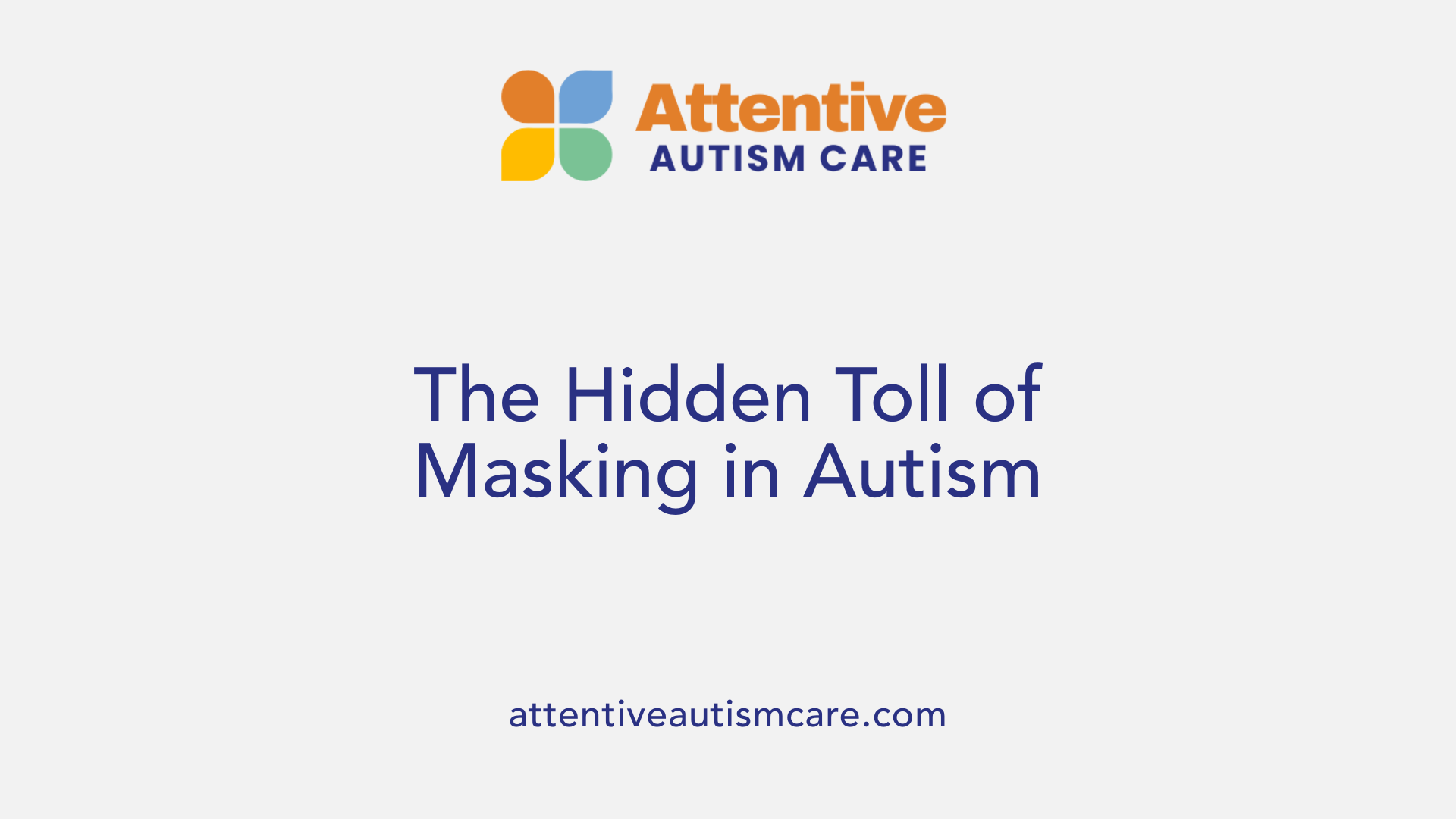
How is camouflaging related to mental health and social anxiety in autistic individuals?
Camouflaging involves autistic individuals consciously masking or compensating for their autistic traits during social situations. While it can help in blending in socially, this behavior exerts a significant mental health toll, often resulting in increased stress and fatigue. Many autistic people describe camouflaging as mentally exhausting, largely because it requires constant effort to imitate social cues, conceal natural behaviors, and adapt to societal expectations.
This prolonged mental strain from camouflaging can undermine a person’s sense of authenticity. Feeling forced to hide or alter fundamental aspects of one’s identity often leads to feelings of diminished self-authenticity, which compounds emotional distress.
Moreover, camouflaging closely links with social anxiety. The effort to hide autistic traits often stems from the fear of negative judgment or social rejection, which heightens social anxiety symptoms. Although targeted cognitive-behavioral therapy (CBT) interventions can reduce social anxiety levels, camouflaging behaviors themselves may persist due to ingrained coping mechanisms or societal pressures.
Given the complex relationship between camouflaging, mental health challenges like stress and fatigue, and social anxiety, understanding this interplay is crucial for developing supportive therapeutic strategies that address both anxiety symptoms and the broader psychological impact of camouflaging.
Cognitive-Behavioral Therapy (CBT) Interventions for Social Anxiety in Autism
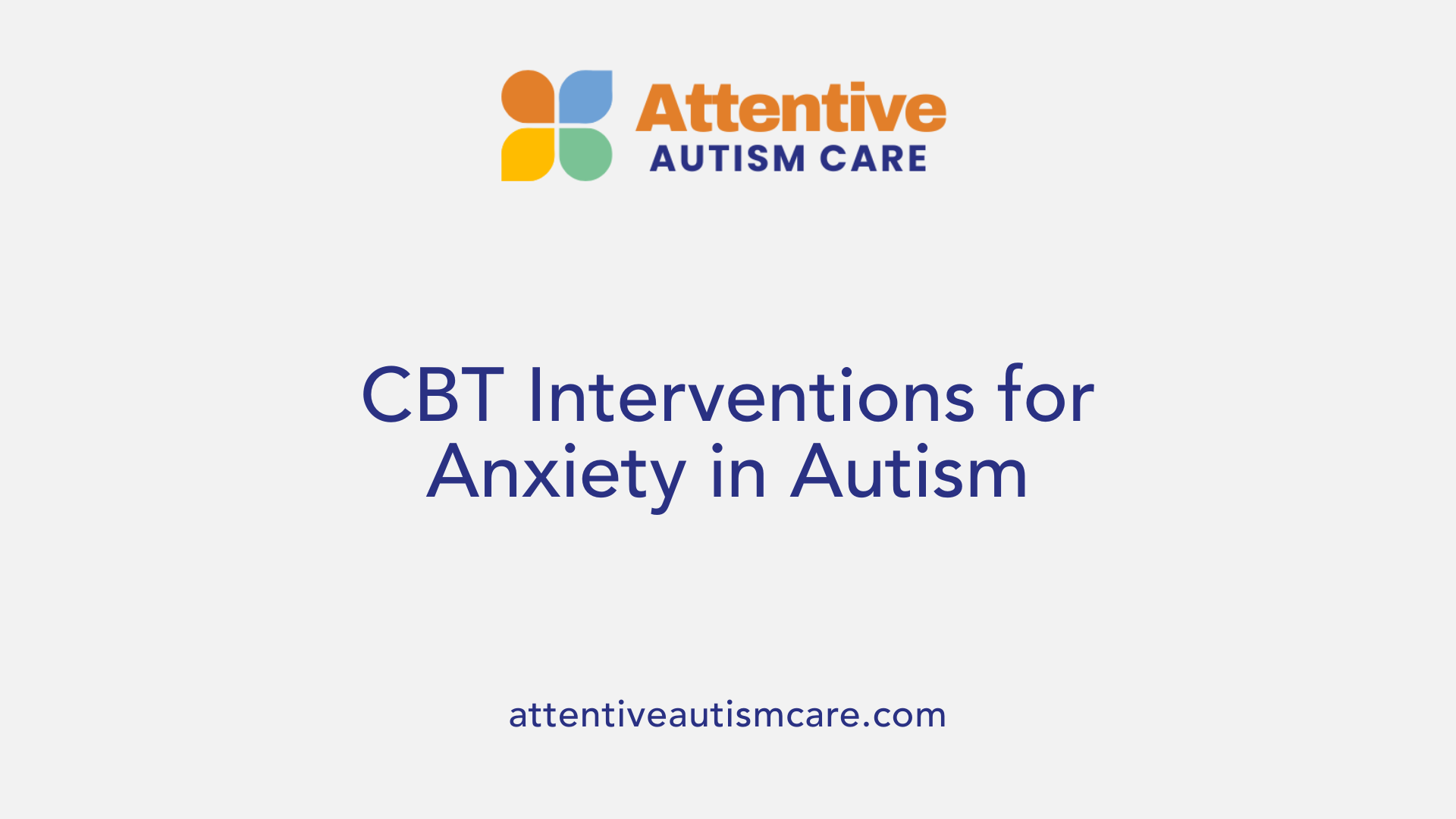
How effective is CBT for treating social anxiety in autistic individuals?
Cognitive-behavioral therapy (CBT) has demonstrated effectiveness in reducing social anxiety symptoms among autistic individuals. Modified CBT programs, such as the 8-week 'Engage Program' targeted at autistic adults, have shown significant reductions in social anxiety with moderate effect sizes. Group CBT interventions that combine social skills training, exposure tasks, and behavioral experiments also report improvements in social anxiety symptoms, social motivation, and even mood-related outcomes.
What adaptations are important for CBT when used with autistic adults?
Successful CBT interventions for autistic individuals include specific adaptations to meet their sensory, communication, and social needs. Tailored components often consist of structured goal setting, social communication strategies (like initiating conversations and setting boundaries), and the use of visual supports. Group settings are beneficial as they provide a supportive and safe environment for authentic interactions, reducing the pressure to camouflage autistic traits. Moreover, sensory sensitivities, including noise and lighting adjustments, are important considerations to facilitate engagement and reduce fatigue.
Additional insights on CBT and social anxiety in autism
While traditional CBT frameworks such as the Clark and Wells model are relevant, they may only partially explain social anxiety in autism. Autistic individuals often experience additional challenges like distress related to uncertainty, requiring adaptations to standard therapies. Importantly, although CBT effectively reduces social anxiety, associated camouflaging behaviors, which can be mentally exhausting, may persist beyond therapy and need targeted intervention.
Overall, CBT stands as a valid and beneficial therapeutic approach for social anxiety in autism, provided that programs are thoughtfully modified to accommodate the unique profiles of autistic individuals.
Engage Program: Modified CBT for Autistic Adults
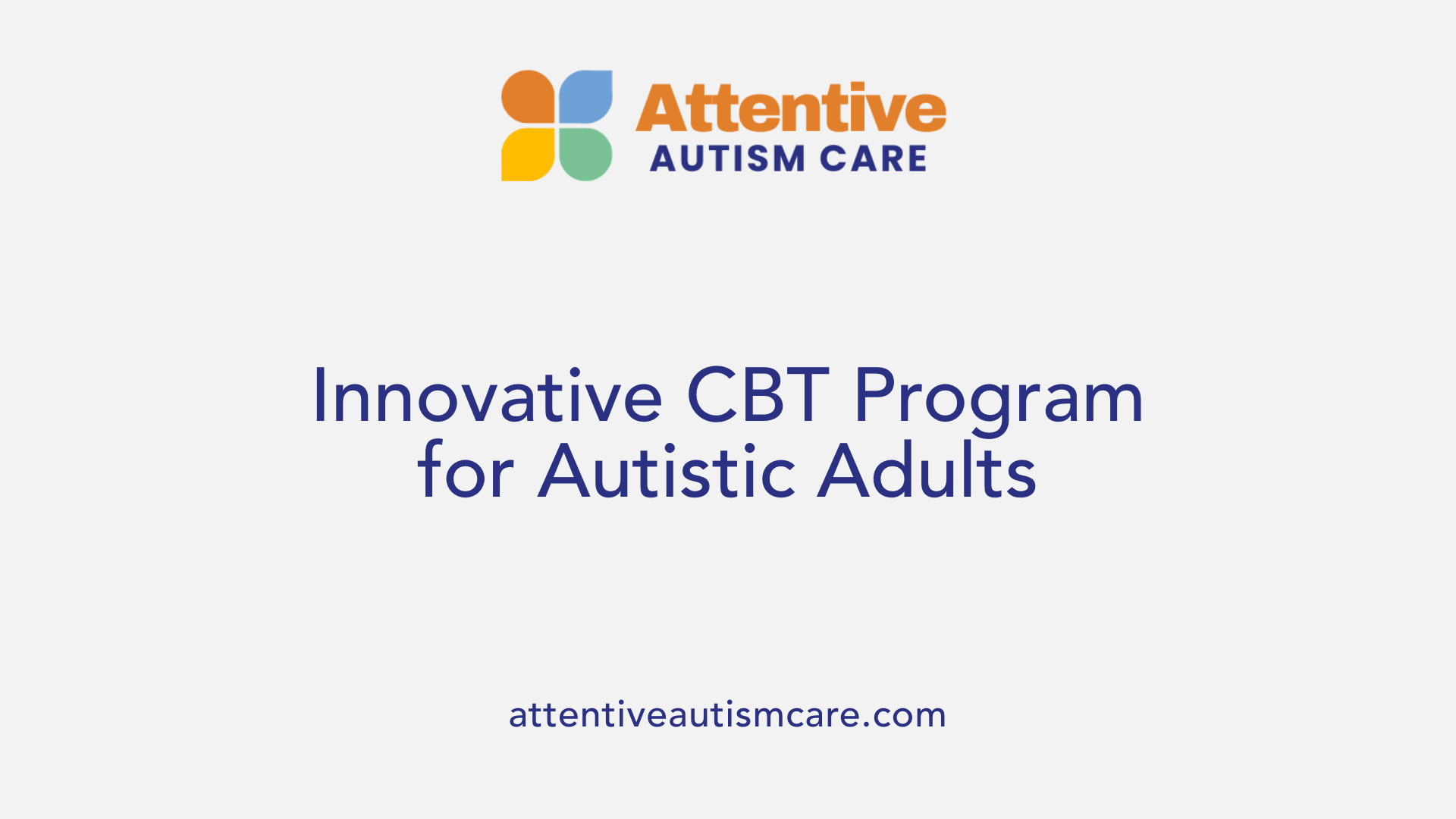
What is the structure of the Engage Program?
The Engage Program is an 8-week modified cognitive-behavioral therapy (CBT) intervention specifically designed for autistic adults. It integrates tailored strategies to address social anxiety while considering the unique sensory and communication needs of autistic participants. The group format encourages peer connection, fostering a supportive environment where authentic interactions can take place without the pressure to camouflage autistic traits. This setting facilitates increased social confidence and self-awareness. The program includes structured goal setting, social communication strategies such as initiating conversations and setting boundaries, and uses visual supports to aid understanding and participation.
How effective is the Engage Program in reducing social anxiety?
Research on the Engage Program reveals significant reductions in social anxiety levels among autistic adults who complete the intervention, with moderate effect sizes noted. Importantly, reductions in social anxiety were also linked to decreases in camouflaging behaviors related to compensation and assimilation, although camouflaging did not change immediately after the program. These findings suggest that while CBT effectively alleviates social anxiety symptoms, camouflaging may be maintained by additional factors beyond anxiety alone, such as coping mechanisms and social pressures.
Participants reported high satisfaction with the program, noting improvements not only in anxiety symptoms but also in overall mental health and social functioning. The group setting and tailored nature of the Engage Program appear to play a pivotal role in its success, indicating that therapy approaches designed specifically for autistic adults hold promise for addressing complex social anxiety issues.
Camouflaging Behaviors Post-CBT Intervention and Implications
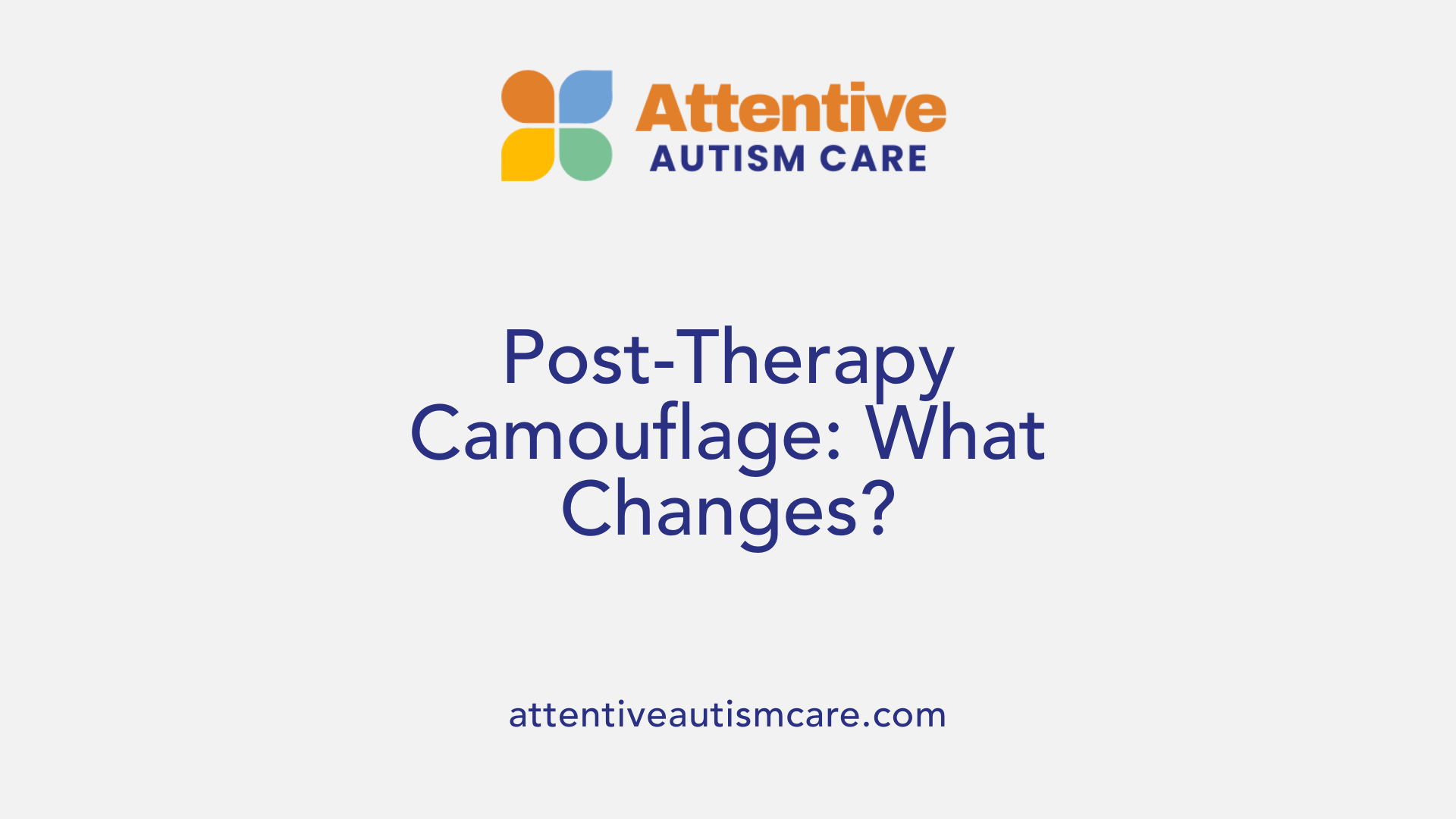
Changes in camouflaging after therapy
Cognitive-behavioral therapy (CBT), particularly modified programs like the 'Engage Program' designed for autistic adults, has shown effectiveness in significantly reducing social anxiety levels. However, despite noticeable improvements in anxiety symptoms post-intervention, immediate changes in camouflaging behaviors—such as compensation, masking, and assimilation—were not significant. This suggests that while therapy can directly impact social anxiety, camouflaging practices may be more ingrained or influenced by factors beyond anxiety alone.
Relation with anxiety reduction
Correlational analyses from recent studies reveal an important connection: reductions in social anxiety symptoms were associated with decreases in specific camouflaging behaviors, notably the compensation and assimilation components. This indicates that as autistic individuals experience less social anxiety, their need or inclination to use some camouflaging strategies may diminish. Nonetheless, camouflaging may be maintained through other complex mechanisms, including habitual coping strategies or ongoing societal and internalized stigma.
Implications for intervention
The nuanced relationship between camouflaging and social anxiety highlights a critical consideration for therapies targeting autistic individuals. Interventions that focus solely on reducing social anxiety might not fully address camouflaging behaviors, which can also impact mental health and self-identity. Hence, therapeutic approaches need to incorporate understanding of camouflaging's broader role and consider strategies that support authentic self-expression alongside anxiety management.
Factors Maintaining Camouflaging Beyond Social Anxiety
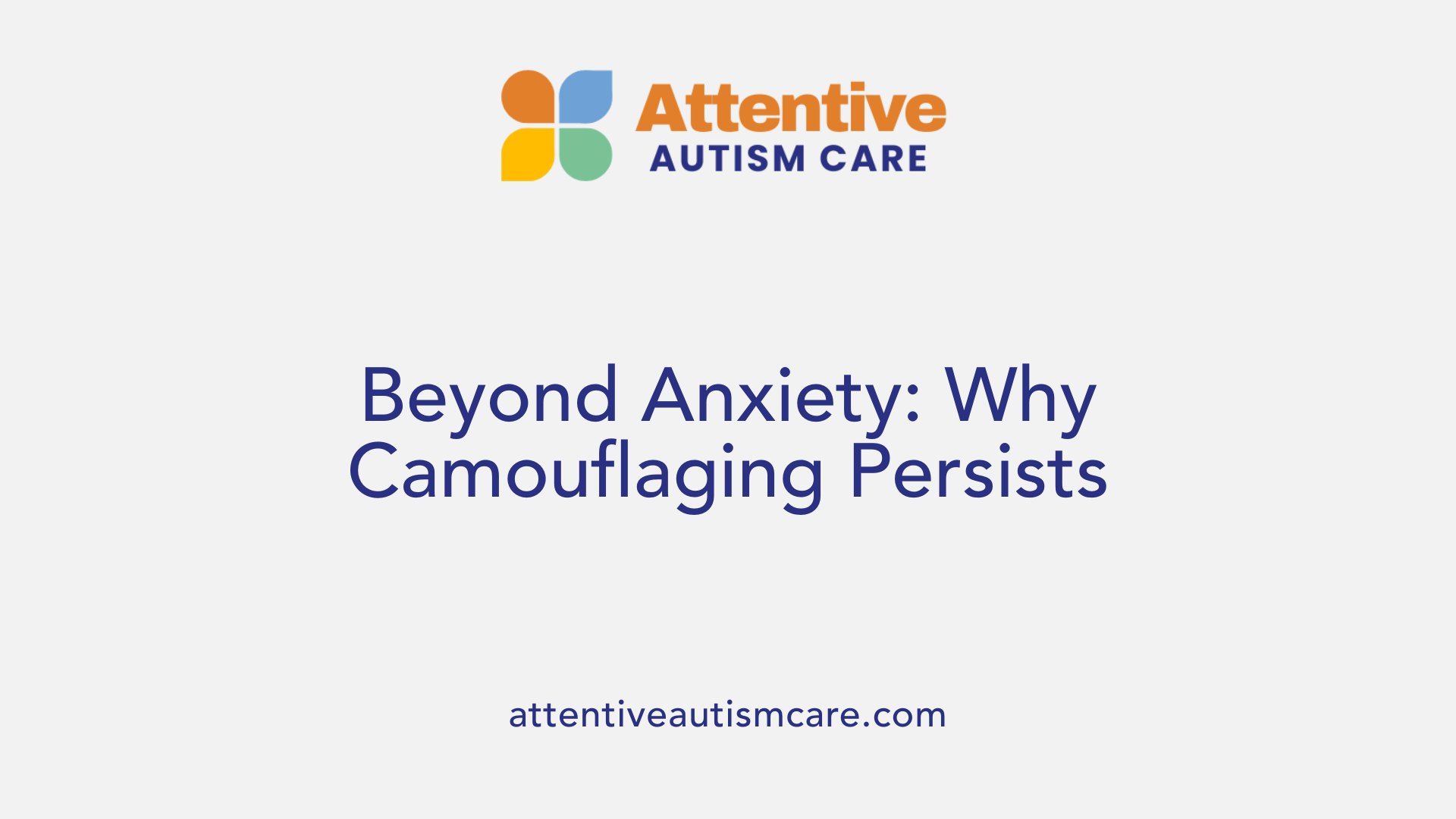
What Are the Coping Mechanisms Behind Camouflaging in Autism?
Camouflaging in autism involves intentional behaviors to mask or compensate for autistic traits, but beyond social anxiety, these strategies often become ingrained coping mechanisms. Many autistic individuals adopt camouflaging to navigate social situations more comfortably, aiming to avoid stigma or negative judgments. Over time, this compensation and assimilation become automatic responses to social demands, serving as a psychological tool to manage interactions even when social anxiety might be alleviated.
How Do Societal Pressures Sustain Camouflaging Behaviors?
Societal expectations play a significant role in maintaining camouflaging behaviors. Pressure to conform to neurotypical social norms, to blend in, and to avoid discrimination compels many autistic individuals to continue masking their true selves. The fear of negative evaluation, exclusion, or misunderstanding leads to ongoing camouflaging, independent of an individual's current level of social anxiety.
Together, these factors mean that reducing social anxiety alone may not fully address camouflaging. While cognitive-behavioral therapy (CBT) targeting social anxiety can lower anxiety symptoms and partially reduce camouflaging related to compensation and assimilation, many autistic individuals continue camouflaging due to societal stigma and deeply embedded coping habits. Therapeutic approaches must therefore consider these broader influences to support authentic self-expression and mental health in the autistic community.
Integrating Social Anxiety and Camouflaging in Intervention Strategies
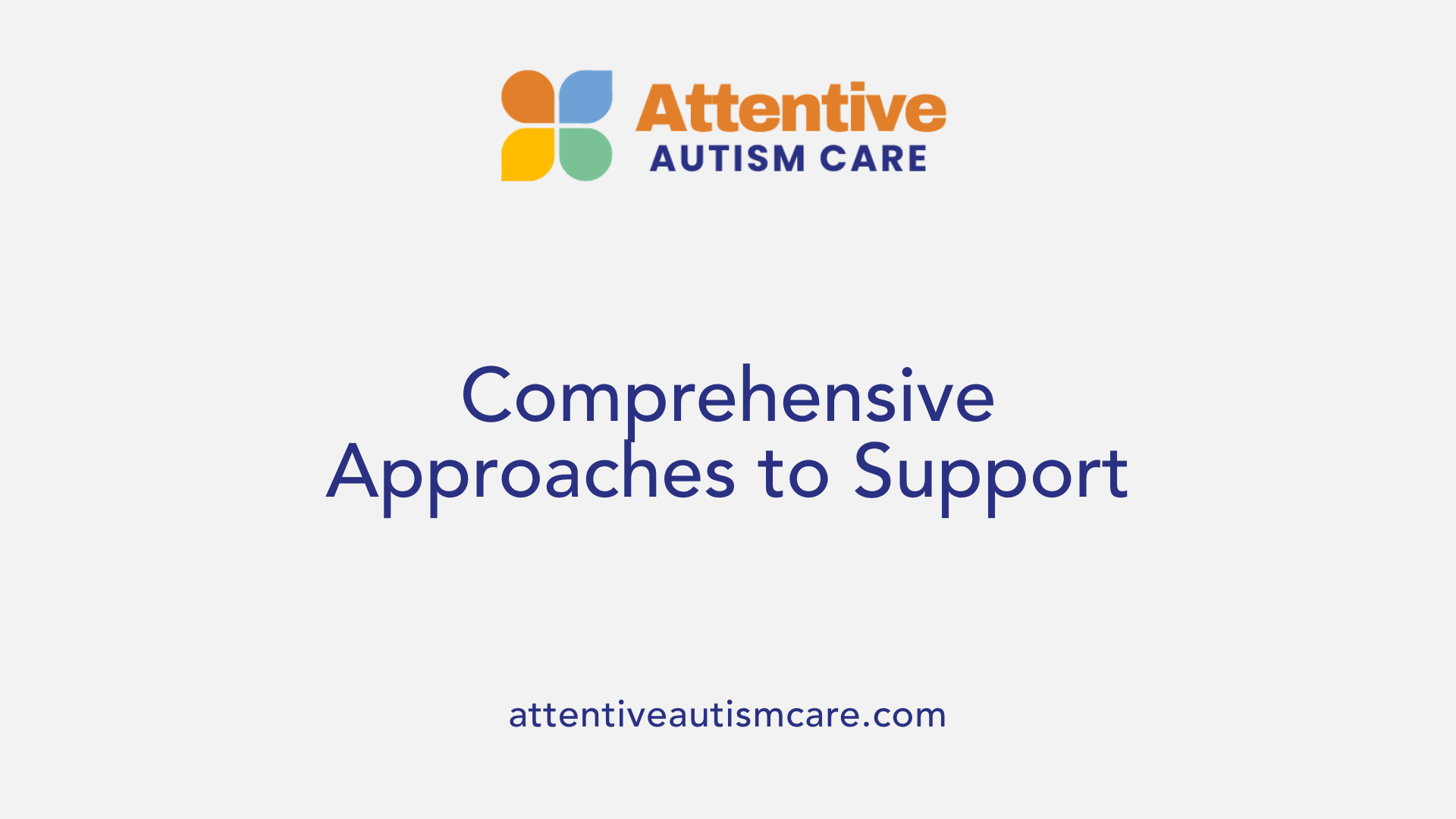
Addressing Mental Health and Self-Identity
Camouflaging in autism involves masking or compensating autistic traits during social interactions through compensation, masking, and assimilation strategies. While these behaviors may help autistic individuals navigate social environments, they are often linked to increased mental health challenges such as stress, fatigue, and a diminished sense of authenticity. Many autistic individuals report camouflaging as mentally exhausting because it involves constant adaptation to social pressures and stigma, which can exacerbate social anxiety.
Therapeutic Implications
Cognitive-behavioral therapy (CBT) has demonstrated efficacy in reducing social anxiety symptoms among autistic adults, as shown in modified programs like the "Engage Program." Although social anxiety symptoms can be alleviated, camouflaging behaviors may persist post-intervention, suggesting they fulfill functions beyond anxiety reduction, such as ingrained coping mechanisms or responses to societal expectations.
Notably, reductions in social anxiety correlated with decreases in camouflaging components like compensation and assimilation, indicating that therapy targeting anxiety can partly influence camouflaging behaviors. However, camouflaging's complex role in mental health and self-identity means that interventions should consider both phenomena. Designing therapeutic approaches that balance reducing social anxiety while respecting the individual's need for authentic self-expression is crucial.
Group CBT settings tailored to autistic adults, emphasizing peer connection and understanding, have been effective in fostering social confidence and self-awareness without pressuring individuals to camouflage. Such environments promote mutual support and help reduce feelings of isolation and stigma.
Overall, integrating strategies addressing social anxiety and camouflaging can enhance mental health outcomes and support autistic individuals in navigating social worlds with greater self-acceptance and reduced psychological burden.
Anxiety Disorders and Treatment Challenges in Youth with Autism

How common are anxiety disorders in youth with autism?
Anxiety disorders are highly prevalent among youth with autism spectrum disorder (ASD). Studies show that these young individuals often experience elevated levels of anxiety compared to their neurotypical peers, significantly impacting their daily functioning and quality of life.
How effective is cognitive-behavioral therapy (CBT) for treating anxiety in autistic youth?
CBT is widely recommended and has demonstrated broad beneficial effects for treating anxiety in youth with autism. It effectively reduces symptoms such as anxiety frequency, intensity, avoidance behaviors, and interference with family and social activities.
However, some challenges exist. CBT appears to have less impact on physical symptoms of anxiety in autistic youth, such as somatic complaints. Additionally, youth with more pronounced autism traits frequently show poorer outcomes in reducing symptom frequency and social or family interference from anxiety.
How do CBT outcomes in youth with autism compare to non-autistic youth?
Compared with anxious youth without autism, those with ASD often experience less improvement, particularly concerning physical symptoms and family interference post-CBT intervention. Despite these differences, CBT remains a valid behavioral therapy option, though adaptations may be needed to better address specific needs.
Key points to consider:
- Anxiety disorders are common and significantly affect autistic youth.
- CBT effectively targets core anxiety symptoms but may require tailoring for physical symptoms and complex autism traits.
- A nuanced therapeutic approach that incorporates modifications specific to autism-related challenges could enhance treatment outcomes.
| Aspect | Effectiveness of CBT in Youth with ASD | Notes |
|---|---|---|
| Symptom Frequency and Intensity | Generally improves, but less so in those with pronounced autism traits | Indicates the need for tailored CBT |
| Avoidance Behaviors | Noticeable reduction | Core target of CBT |
| Family Interference | Improvement observed but less than in non-ASD peers | Suggests additional family-focused interventions needed |
| Physical Symptoms | Less responsive | May require adjunct treatments or modified approaches |
| Social Interference | Reduced but outcomes vary with autism severity | Skill-building components may enhance results |
Group CBT Interventions for Young Adults with ASD
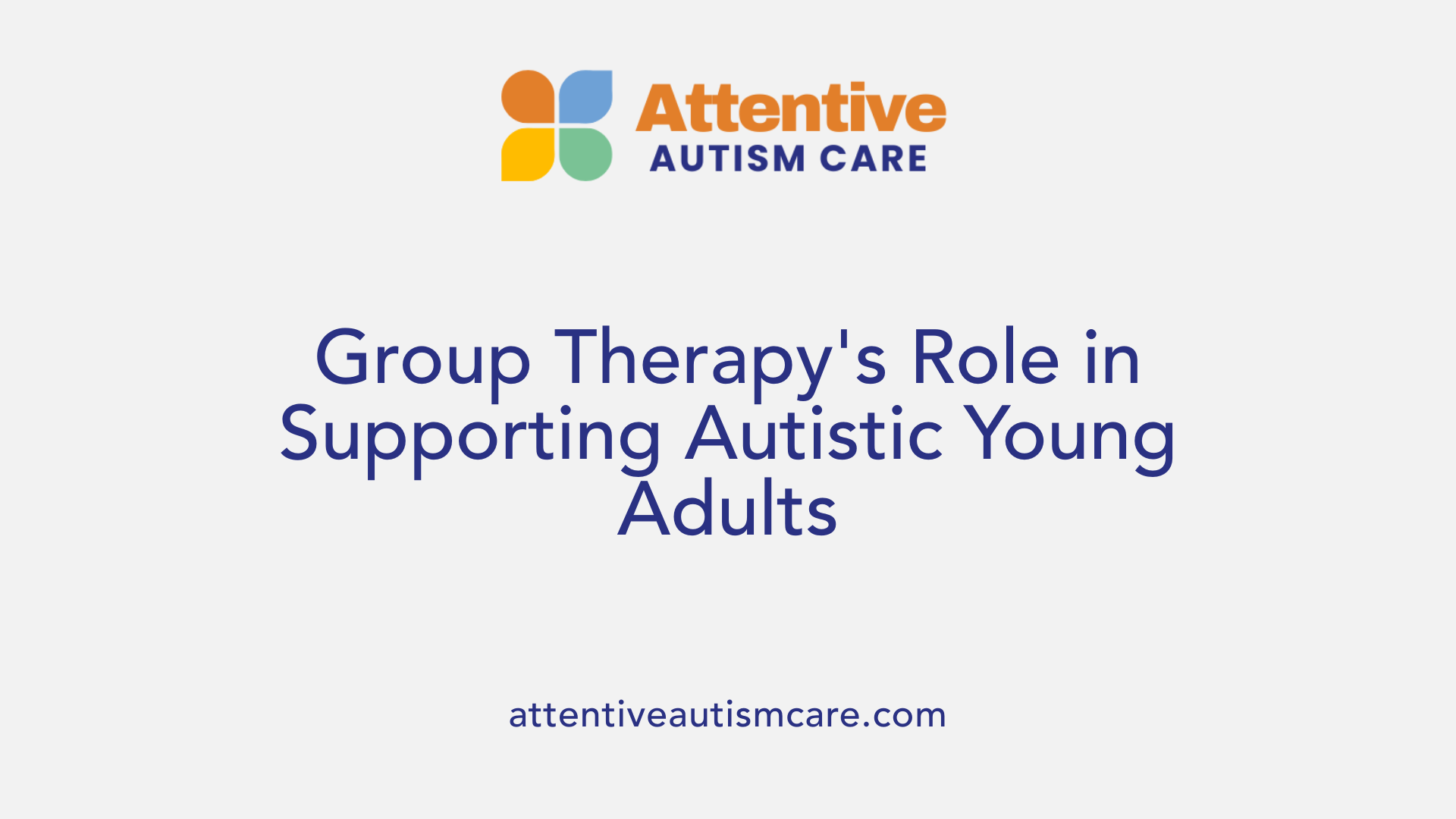
Social anxiety and social functioning improvements
A group cognitive-behavioral therapy (CBT) intervention specifically designed for young adults with autism spectrum disorder (ASD) has demonstrated promising results. This program targeted both social anxiety symptoms and social functioning difficulties, incorporating social skills training, exposure tasks, and behavioral experiments. In a study with 78 adolescents and young adults aged 16 to 38, participants showed statistically significant improvements not only in reducing social anxiety but also in enhancing social motivation and decreasing restricted and repetitive behaviors. These effects, though small, suggest that a combined focus on anxiety and social skills can benefit key areas of functioning relevant to autistic individuals.
Participant satisfaction
The group CBT program was well tolerated by participants, who reported high levels of satisfaction and engagement. Many valued the shared group setting that enabled peer connection, fostering a sense of belonging and mutual understanding among autistic individuals. This supportive environment helped participants feel less isolated and more confident in social situations. Overall, the positive feedback highlights the clinical potential of group CBT interventions tailored to address both social anxiety and social skills in young adults with ASD.
Peer Support and Connection in Autism-Specific Therapy Groups

Benefits of peer connection
Therapy groups tailored for autistic adults place significant emphasis on peer support, which has emerged as a core facilitator of engagement and positive outcomes. Participants often report that connecting with others who share similar experiences reduces feelings of isolation and stigma. This shared understanding creates a validating environment where individuals can express themselves without the pressure to camouflage autistic traits. The group setting fosters authenticity, providing a safe space for social interactions that may be difficult to replicate elsewhere.
Impact on social confidence and self-awareness
Engagement in these therapy groups has shown to enhance social confidence among autistic adults. Through mutual support and shared experiences, participants develop greater self-awareness regarding their strengths and challenges in social situations. The peer environment encourages open discussion around coping strategies and personal insights, which supports improved social communication skills and emotional regulation. This, in turn, contributes to greater motivation to participate socially outside the therapeutic context.
Additional therapeutic elements
Alongside peer support, these group interventions often include structured goal setting, social skills training, and visual supports adapted to sensory and communication needs. These components complement the benefits of peer connection by equipping participants with practical tools while reinforcing the positive effects of belonging to a neurodivergent-focused community.
Overall, autism-specific therapy groups that emphasize peer connection help break down social barriers, reduce anxiety related to social encounters, and promote sustainable improvements in social functioning and well-being.
Tailored Therapy Strategies for Autistic Adults
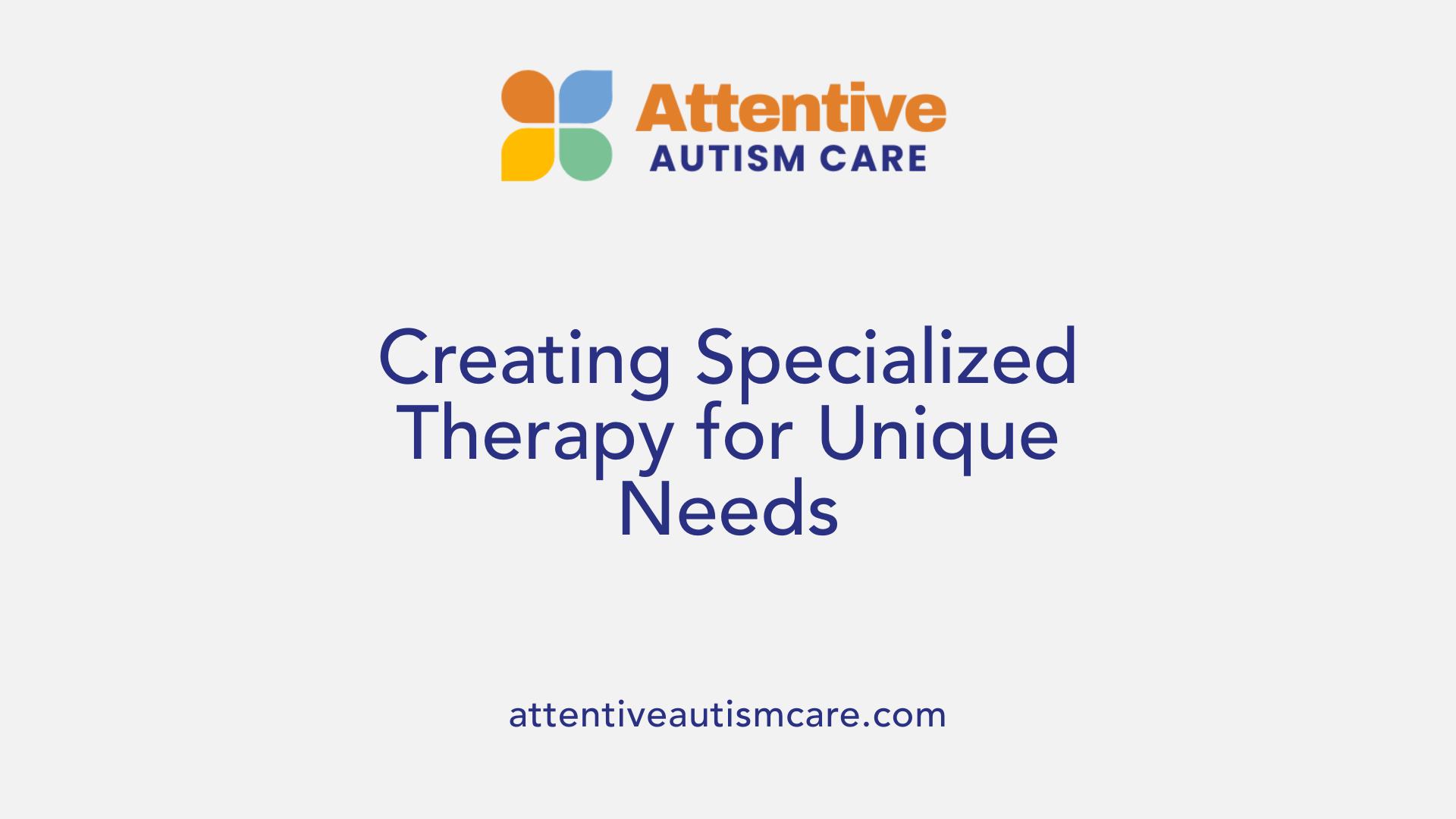
Structured goal setting
Tailored cognitive-behavioral therapy (CBT) programs for autistic adults often include structured goal setting as a foundational component. This approach helps participants focus on achievable, well-defined objectives during therapy. By breaking down social anxiety and communication challenges into manageable goals, individuals can track progress and build confidence incrementally. Structured goals also provide clarity and predictability, which align with many autistic adults' preference for routine and reduce uncertainty that often exacerbates anxiety.
Adaptations for sensory and communication needs
To accommodate sensory sensitivities common in autism—such as sensitivity to noise and light—therapy environments are modified to create a calmer and more comfortable space. Visual supports and clear communication strategies play a vital role in these adaptations. For example, therapists may use visual schedules or cue cards to aid understanding and reduce ambiguity.
Communication adaptations include coaching on how to initiate conversations, set social boundaries, and interpret social cues, recognizing that autistic individuals often experience difficulties in these areas. Importantly, therapy groups provide a setting where autistic adults can interact authentically without the pressure to camouflage their autistic traits, fostering acceptance and reducing mental fatigue associated with masking behaviors.
Together, these tailored strategies enhance engagement and effectiveness of therapy, supporting autistic adults in improving social confidence and coping skills while respecting their unique neurodivergent needs.
Challenges and Benefits of Group Therapy Environments for Autism
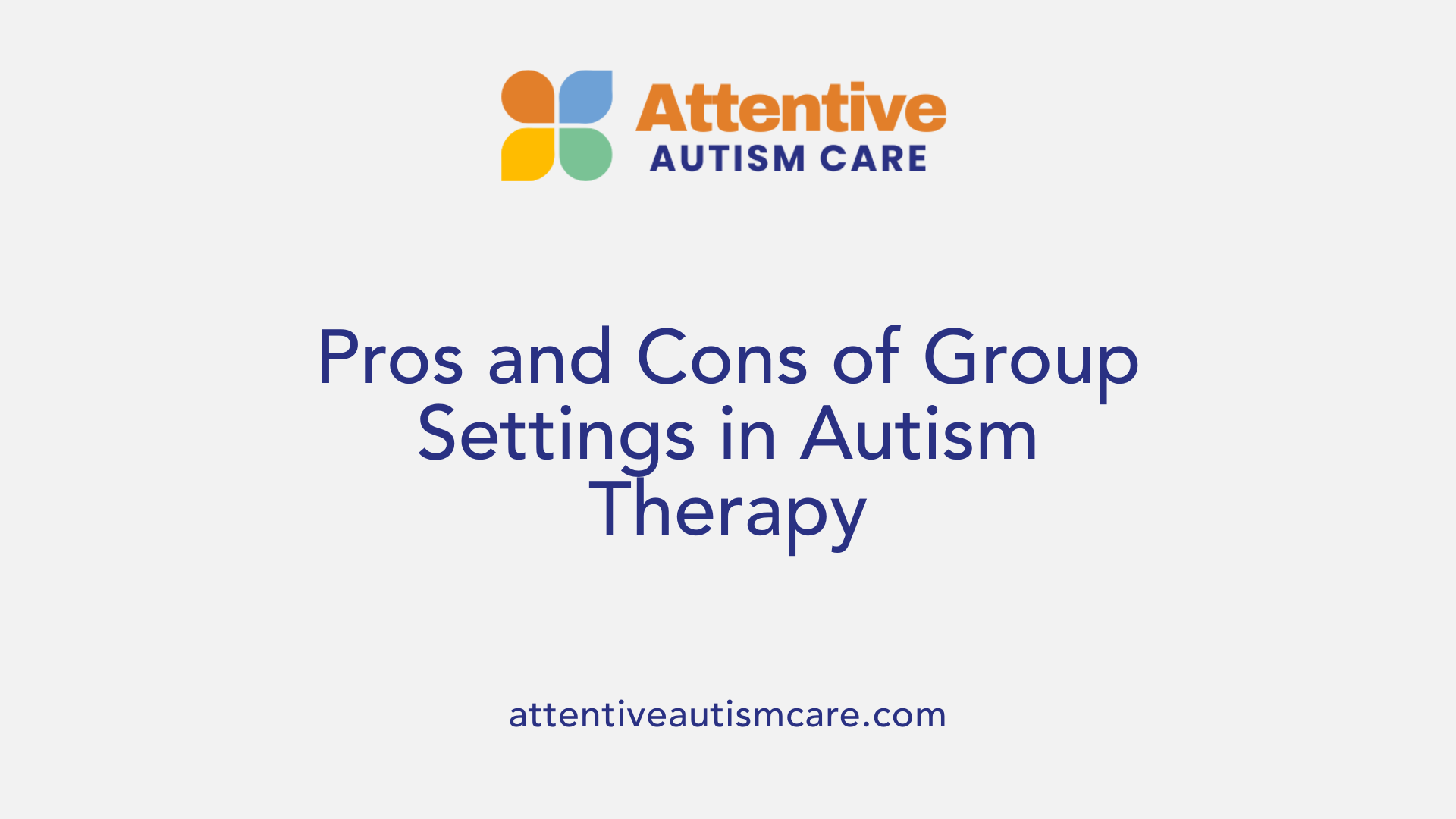
Sensory Sensitivities in Group Therapy
Many autistic individuals experience heightened sensory sensitivities, such as discomfort from noise and bright lights, which can present challenges during group therapy sessions. These environmental factors may lead to increased fatigue and social stress, potentially impacting engagement and participation. To accommodate these needs, therapy programs have incorporated sensory-friendly adjustments like controlled lighting and sound levels, creating a more comfortable setting for attendees.
Safe Spaces Reduce the Pressure to Camouflage
Group therapy environments tailored for autistic adults offer a vital safe space where participants feel less pressure to camouflage their autistic traits. Unlike typical social settings, these groups encourage authentic interactions without masking behaviors, helping reduce stress and mental exhaustion associated with camouflaging. This acceptance fosters mutual understanding and connection among peers, enhancing social confidence and self-awareness.
Additional Benefits of Group Settings
Participants often report that being part of an autism-focused group helps them better understand their diagnosis, recognize social strengths and challenges, and develop personalized coping strategies. The shared experience also alleviates feelings of isolation and stigma by offering peer validation and support.
Recommendations for Improving Therapy Groups
Given the importance of a supportive sensory environment, predictable session structures, and opportunities for peer connection, therapy programs emphasize the need for neurodivergent-centered, flexible, and accessible spaces. This approach helps maximize therapeutic effectiveness while minimizing barriers related to sensory overload or past negative therapy experiences.
Insights from Clark and Wells Model Applied to Autism Social Anxiety
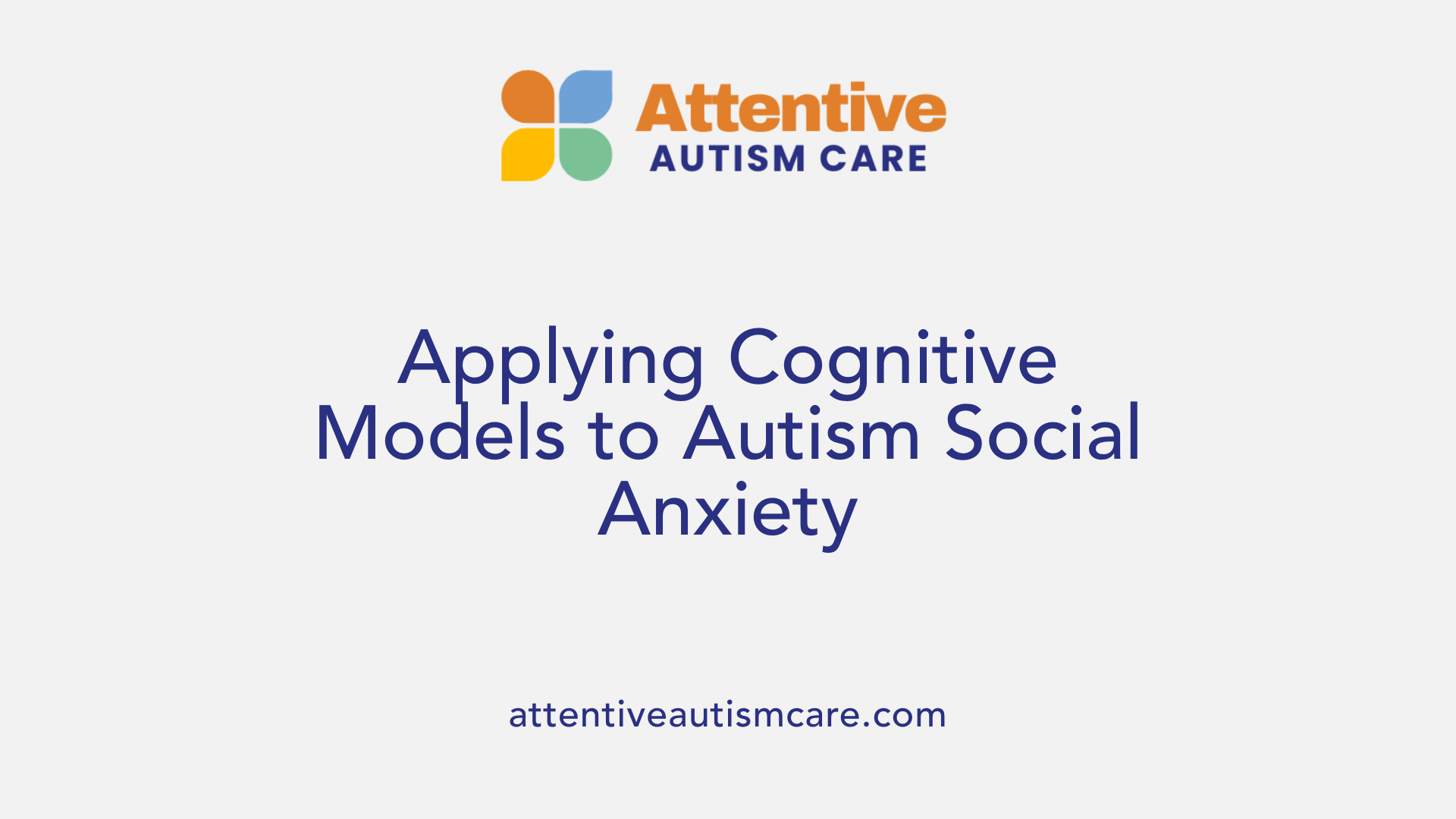
Relevance and Limitations of Model Variables
The Clark and Wells (1995) cognitive-behavioral model of social anxiety is a foundational framework used widely for neurotypical individuals. Key variables in this model include negative automatic thoughts about social evaluation, safety behaviors—actions aimed at preventing feared social disasters—and self-focused attention, which intensifies feelings of anxiety.
Research involving over 300 autistic and non-autistic adults has demonstrated that these core variables are indeed relevant for autistic individuals experiencing social anxiety. Autistic participants commonly report negative beliefs about how others evaluate them, paralleling experiences in the neurotypical population. This shared cognitive component underscores the potential applicability of traditional social anxiety treatment models to autism.
However, important limitations emerged. The association between safety behaviors and social fears was weaker in autistic adults than in neurotypical controls. This suggests that autistic individuals might engage differently with safety behaviors or that these behaviors play a less central role in maintaining their social anxiety. Consequently, the Clark and Wells model may require adaptations to fully capture the nuances of social anxiety in autism.
Additional Factors Influencing Social Anxiety
Beyond the model’s original variables, autistic individuals experience unique challenges influencing social anxiety. One particularly significant factor is distress related to intolerance of uncertainty. Autistic people often prefer predictable routines; unpredictable social situations can provoke heightened anxiety that is less accounted for in traditional models.
Furthermore, impairments in emotional regulation and social cognition deficits contribute to social anxiety. For example, difficulties in interpreting social cues and recognizing emotional expressions can amplify fear in social encounters. High cognitive ability sometimes increases awareness of these social challenges, paradoxically worsening anxiety symptoms.
These additional influences mean therapy should address both traditional cognitive aspects and autism-specific experiences. Modifying cognitive-behavioral interventions to incorporate intolerance of uncertainty and tailored coping strategies promises a more effective, holistic approach for treating social anxiety within the autistic community.
Shared Cognitive Components of Social Anxiety in Autistic and Neurotypical Populations

Negative Beliefs About Social Evaluation
Autistic individuals commonly experience negative beliefs about how others evaluate them socially, a cognitive feature that closely mirrors patterns seen in neurotypical individuals with social anxiety. These beliefs often manifest as worries about being judged, embarrassed, or rejected during social interactions. Such concerns can fuel avoidance behaviors and increase stress, contributing significantly to the maintenance of social anxiety across both populations.
Cognitive Similarities
Research indicates that many cognitive components linked to social anxiety are shared between autistic and neurotypical individuals. For example, negative automatic thoughts and heightened self-focused attention during social events are central to both groups. These shared cognitive patterns suggest that foundational cognitive theories of social anxiety, like the Clark and Wells (1995) model, capture important elements of autistic social fears.
However, studies also highlight that autistic people often experience greater social fears than what these cognitive variables alone can explain, indicating additional factors at play. This overlap in cognitive features supports the relevance of cognitive-behavioral approaches while simultaneously underscoring the need for adaptations to address autism-specific experiences such as distress related to uncertainty and distinctive social processing challenges.
Adaptations Needed for Social Anxiety Models and Therapies in Autism
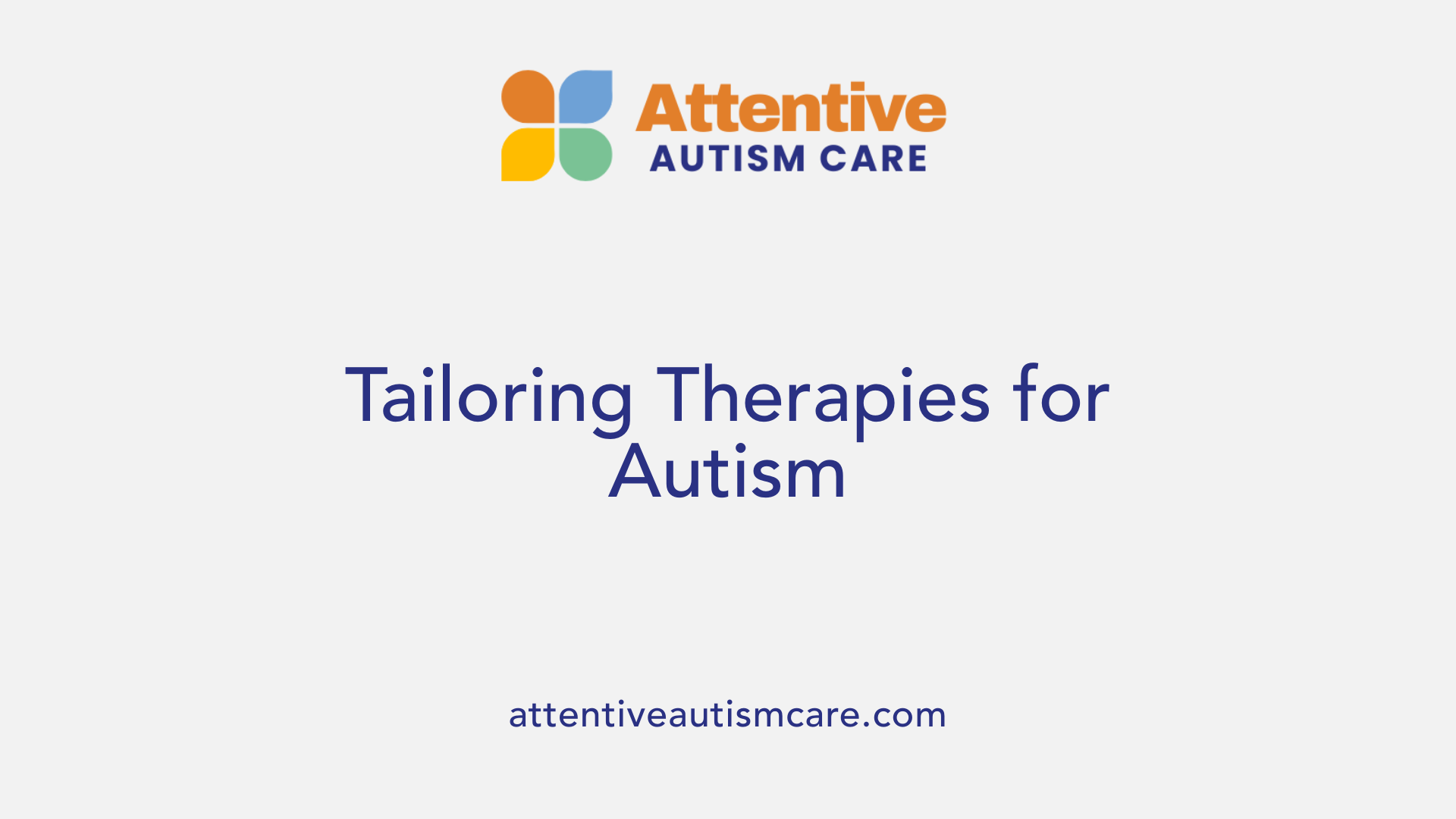
Why do safety behaviors have a weaker association with social fears in autistic individuals?
Research involving over 300 autistic and non-autistic adults has revealed that safety behaviors — actions intended to prevent feared social outcomes — are less strongly connected to social fears in autistic people. This suggests that autistic individuals may not rely on typical safety behaviors in the same way as neurotypical individuals, potentially due to differences in social cognition or coping strategies unique to autism.
Why is there a necessity for modified approaches in social anxiety therapies for autism?
The Clark and Wells cognitive-behavioral model, a standard framework for treating social anxiety, shows relevance but is incomplete when applied to autism. While negative thoughts and self-focused attention are common across groups, additional factors like distress related to uncertainty and unique social processing challenges in autism require adaptations. Therapies must incorporate these autism-specific elements to effectively address social anxiety.
What implications do these findings have for therapy development?
Therapeutic interventions for social anxiety in autistic individuals should be tailored, acknowledging weaker safety behavior engagement and including components addressing uncertainty intolerance and distinct social difficulties. This can involve modified cognitive-behavioral therapy techniques, incorporation of sensory and communication considerations, and peer-supported environments that reduce camouflaging pressures.
By adapting existing models to better fit the autistic experience, clinicians can improve treatment efficacy and support autistic individuals in managing social anxiety more effectively.
Towards Comprehensive and Tailored Support for Social Anxiety in Autism
Social anxiety in autism results from a complex interplay of social communication deficits, emotional regulation challenges, cognitive factors, and behavioral strategies like camouflaging. Recognizing these unique dynamics is critical for developing effective, sensitive therapies that address both social anxiety symptoms and the broader mental health needs of autistic individuals. Modified cognitive-behavioral therapies, especially those incorporating peer support and tailored strategies, show promising benefits. Continued research to refine understanding and intervention models will enhance outcomes and promote greater well-being and social participation for autistic individuals confronting social anxiety.
References
- Correlations Between the Development of Social Anxiety ...
- Social anxiety in autism spectrum disorder: A systematic ...
- Cognitive‐Behavior Therapy for Social Anxiety Does Not ...
- Effects of cognitive-behavioral therapy on core aspects ...
- Modified CBT for social anxiety and social functioning in ...
- Autistic adults' experiences of cognitive-behavioural group ...
- Social Anxiety in Autistic People: Does the Clark and Wells ...



































































































